5 Ways to Explore Istria Off the Beaten Path
March 12th, 2022 - There’s so much more to Istria beyond the famous Rovinj landscape or the olive oil and truffle fame. The region is full of treasures to discover, and we're happy to help you plan your visit with five unique ideas for things to do in Istria
And then go ahead and have those truffles anyway - we’d never think to suggest otherwise.
Walk the Parenzana trail
Not necessarily the whole thing, of course: running through three countries, the Parenzana trail is 123 kilometres long in total, and it's perfectly fine to only walk or cycle a part of it. Historically, Parenzana was known as the narrow-gauge railway which connected the Italian port city of Trieste with Poreč in Istria, passing through many inland villages and smaller towns along the way.
Fun fact: as the inauguration of the Parenzana line in Trieste was delayed several times due to various issues, the locals got skeptical after a while. When the first train ceremonially arrived in Trieste on April 1st, 1902, almost no one showed up at the railway station because people were convinced the announcement was an April Fools’ joke.
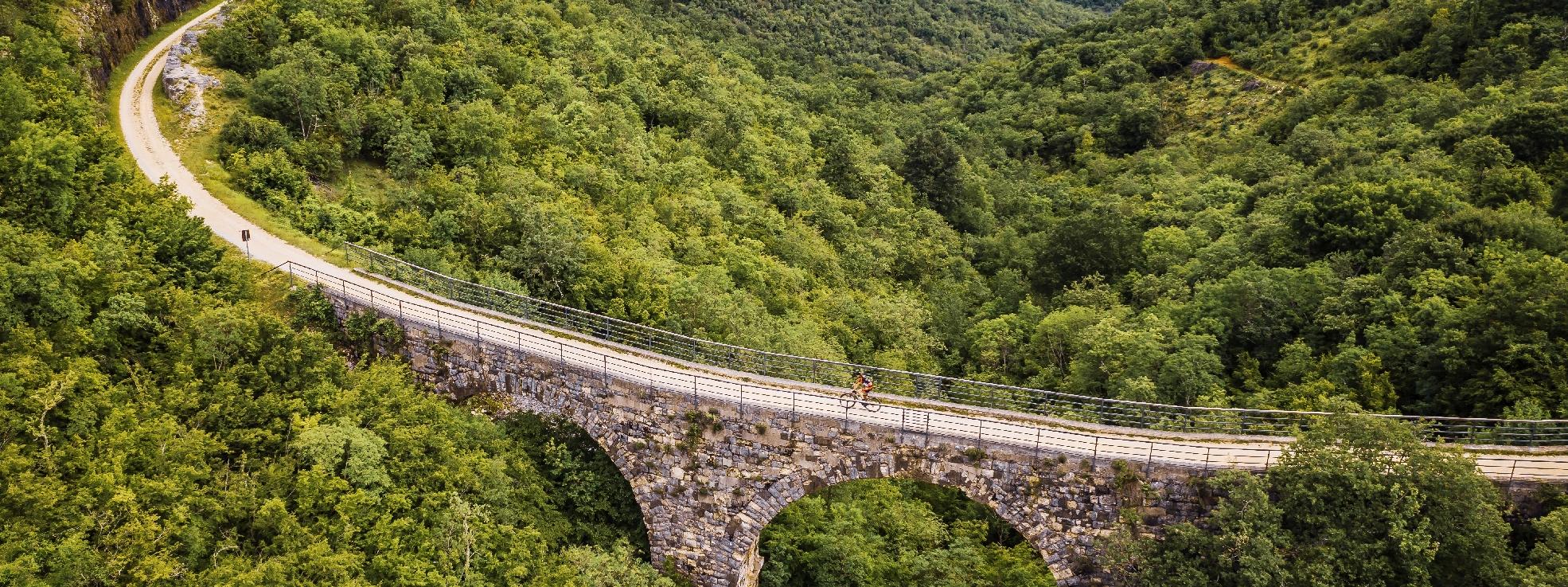 Parenzana trail / parenzana.net
Parenzana trail / parenzana.net
But it wasn’t, and the railway soon made it possible for agricultural produce to be distributed all over the region, stimulating Istria’s economic progress and becoming somewhat of a lifeline for the local population. Although the railway line ceased operation in 1935, it certainly left a mark on the region, and so it was decided to revive the route as a hiking and cycling trail.
Parenzana will take you over bridges and viaducts, now secured by guard rails; it runs through well-lit tunnels and snakes through the lush landscape. The entire trail is well-marked and is split into shorter routes - a comprehensive guide is available on parenzana.net, in several languages.
Ride the zipline over the Pazin abyss
Although Pula is the biggest town in Istria, the county’s administrative seat is actually Pazin, a town located in the very centre of the region.
Pazin boasts a medieval castle that was once a residence of Istrian margraves and hasn’t lost any of its grandeur with time. Perched on top of a tall cliff plummeting into the Pazin abyss, the castle dominates the majestic landscape which inspired literary giants of the likes of Dante Alighieri and Jules Verne.
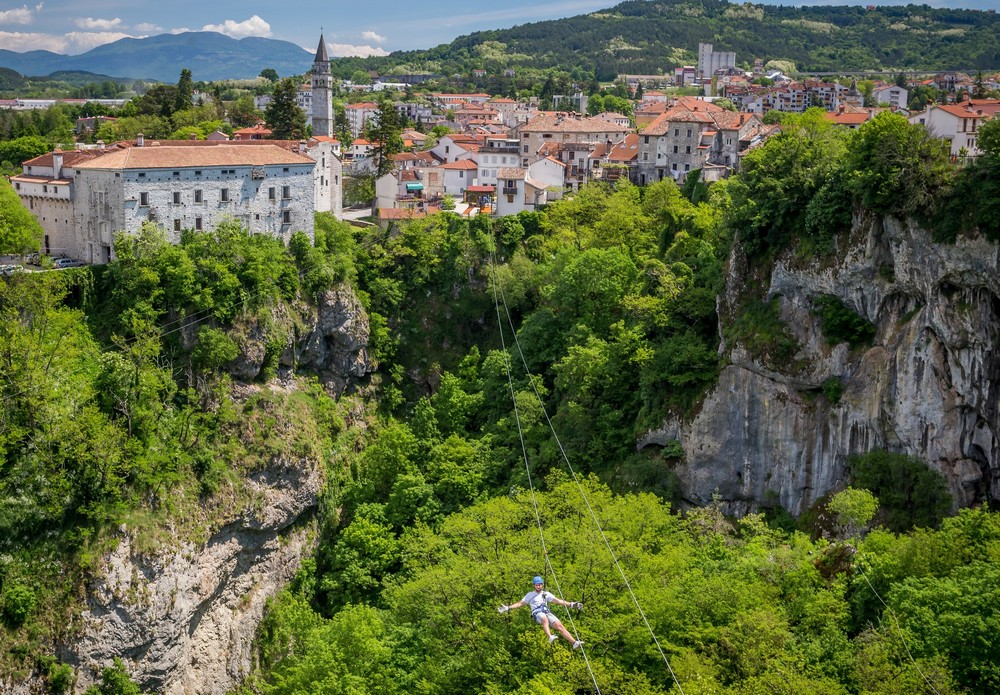 Pazin / Central Istria Tourist Board, photo by Julien Duval
Pazin / Central Istria Tourist Board, photo by Julien Duval
And what better way to take in the impressive sights than flying over the natural attraction? The Pazin zipline runs over the abyss in two stages: the first cable is 220m long and the second 280m, giving adrenaline lovers plenty of time to admire the historic landscape, as well as the karst phenomenon down below.
The zipline operates regularly from May 1st, but can be visited in the off-season as well upon request, provided you’re visiting with a group - contact info is available on their Facebook page.
Hike the contraband trails of Učka mountain
Have you ever had a chance to retrace the steps of smugglers of the past? A few years ago, three unique hiking trails were established on the Učka mountain, the natural border between Kvarner and Istria, introducing hikers to the history of contraband activity in the area.
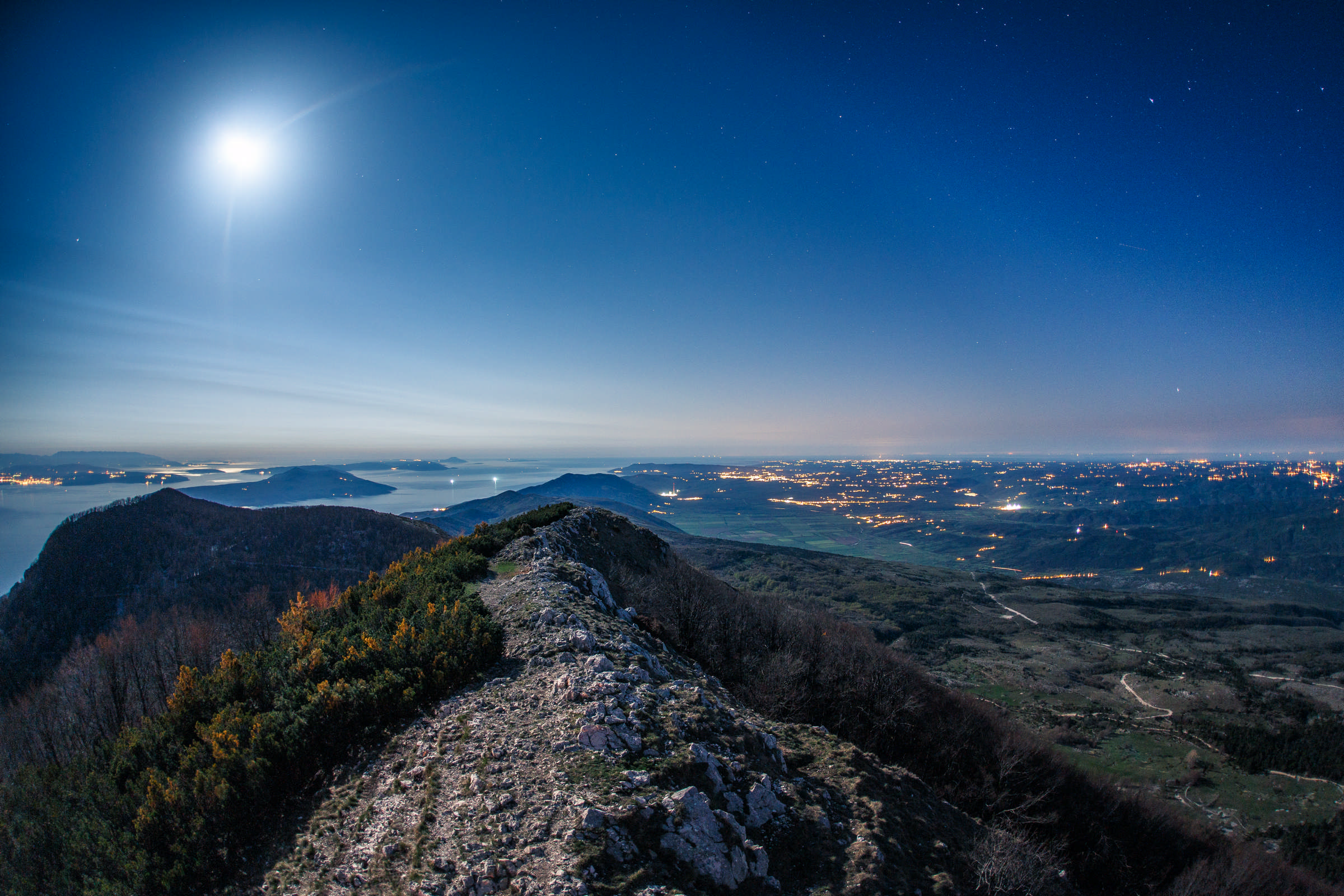 Učka mountain © Mario Romulić
Učka mountain © Mario Romulić
In the 1930s, a duty-free zone was established on the coastline around Rijeka to stimulate tourism and the local economy. Overnight, consumer goods became much cheaper, and the struggling population soon started to smuggle products such as sugar and petroleum out of the duty-free zone and over the Učka mountain on foot. They sold the goods for profit in the rest of the region as a way to survive in times of scarcity - check out this TCN feature for the full story.
You can find detailed information about the hiking routes in a dedicated mobile app, along with a list of accommodation providers and restaurants in the area. It’s available to download on GooglePlay and AppStore - search for 'Kontraband thematic trails'.
Discover the history of mining in Raša
Istria has a long history of coal mining, specifically in the area around Labin town located off the eastern coast of the peninsula. Arguably the most unique place in the mining landscape is Raša, known as Istria's youngest town which was purposefully built in the 1930s to house miners and their families.
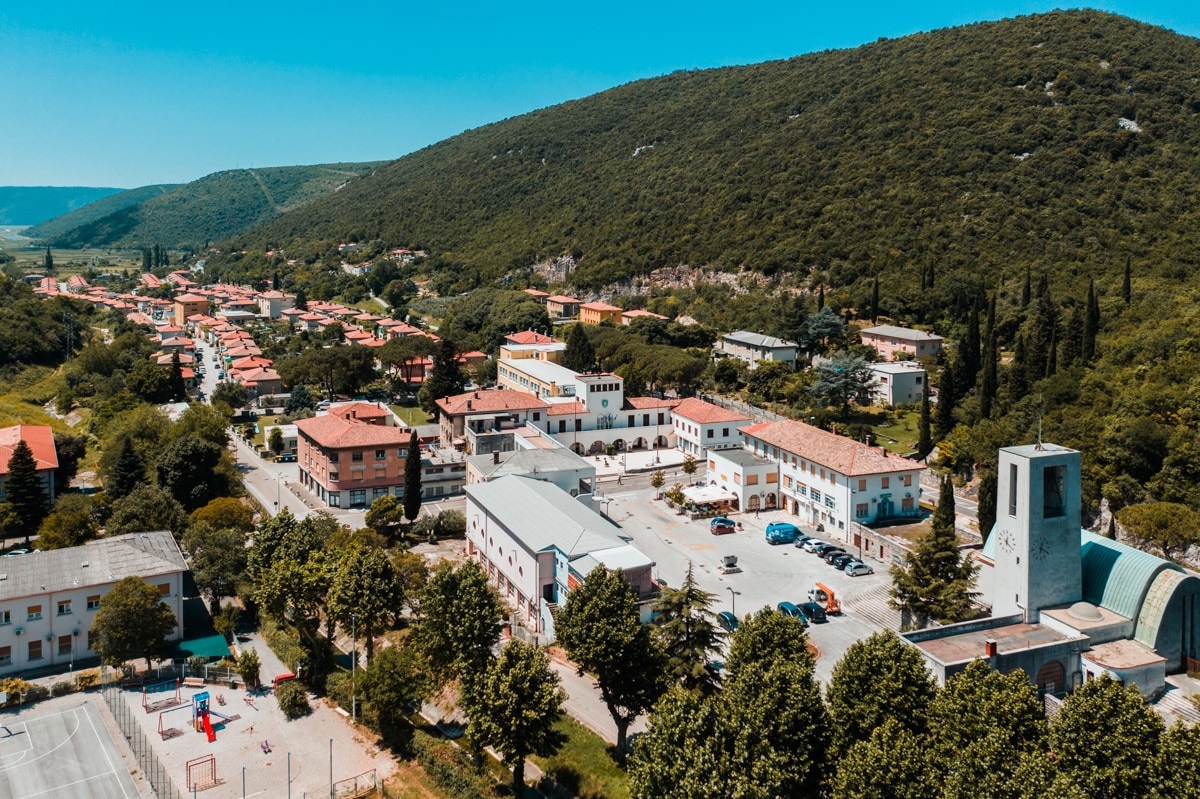 Raša town / Raša Tourist Board
Raša town / Raša Tourist Board
Two pairs of streets lined with former miners’ houses meet at the central square in Raša, crowned with a church built in the shape of an overturned mining cart and dedicated to the patron saint of miners, St Barbara.
Even though the mines closed a long time ago, you can experience what it was like to spend your days in the dark underworld. Located on the main square in Raša, the Miners House Arsia tells the story of Istrian miners and provides insight into their lives both above and below ground.
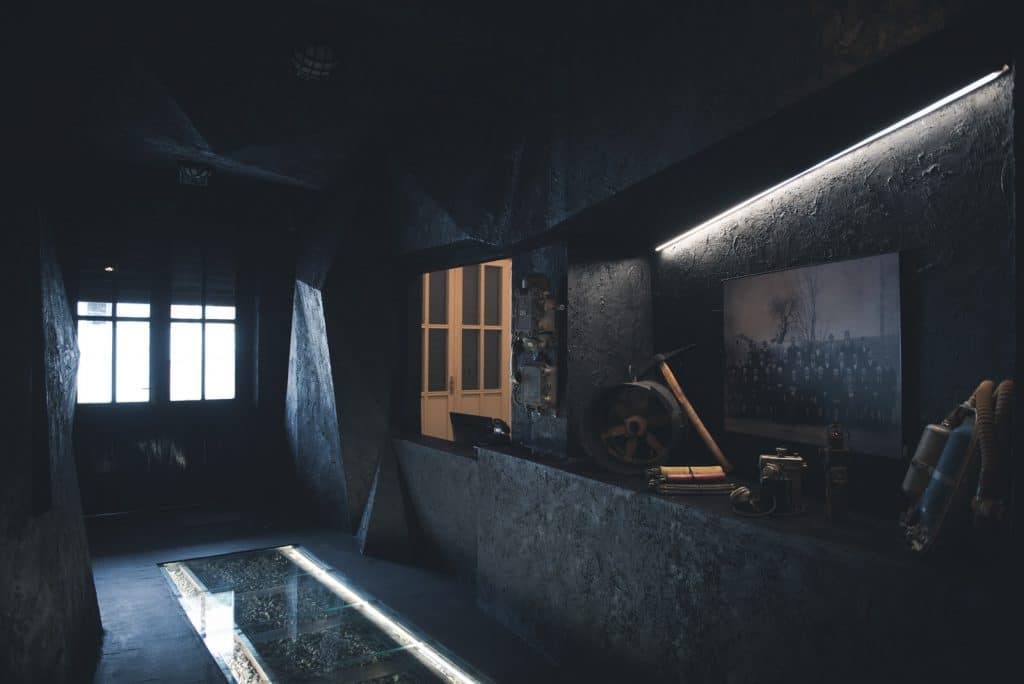 Miners' House Arsia / Raša Tourist Board
Miners' House Arsia / Raša Tourist Board
Starting from the entrance built like a mining shaft, the museum evokes the atmosphere of a mine - you can walk on the original railroad tracks surrounded by the sounds of coal digging and distant explosions, watch archival films to learn the stories of real miners who once inhabited the town, but also step into their homes thanks to a perfect recreation of a typical miner’s apartment.
Learn more about the Miners’ House over at the Raša Tourist Board.
Visit Croatia’s oldest lighthouse in Savudrija
The Adriatic coast is dotted with numerous historic lighthouses, most of them built in the 19th century. The one in Savudrija, the northwestern tip of Istria, boasts two champion titles: it’s the oldest active lighthouse in Croatia, and the world’s first lighthouse powered by coal gas.
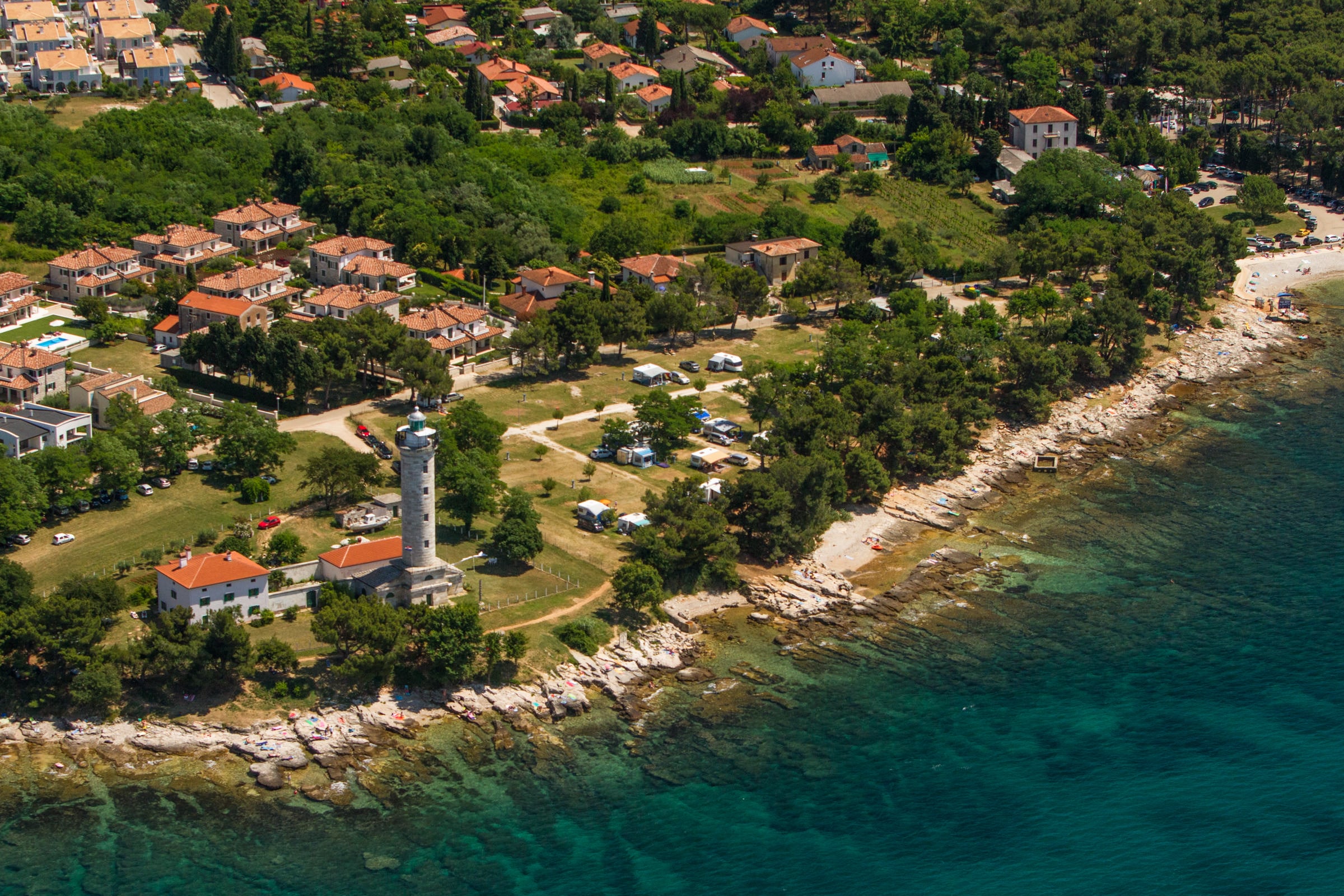 Savudrija lighthouse © Mario Romulić
Savudrija lighthouse © Mario Romulić
The lighthouse was built of white Istrian stone and powered by coal shipped in from the Labin mines. It was inaugurated in 1818 and became a local sensation overnight: people were so fascinated by the new structure, the lighthouse keepers were soon granted a licence to bear arms and were instructed to shoot any enthusiasts who attempted to scale the building and climb to the top.
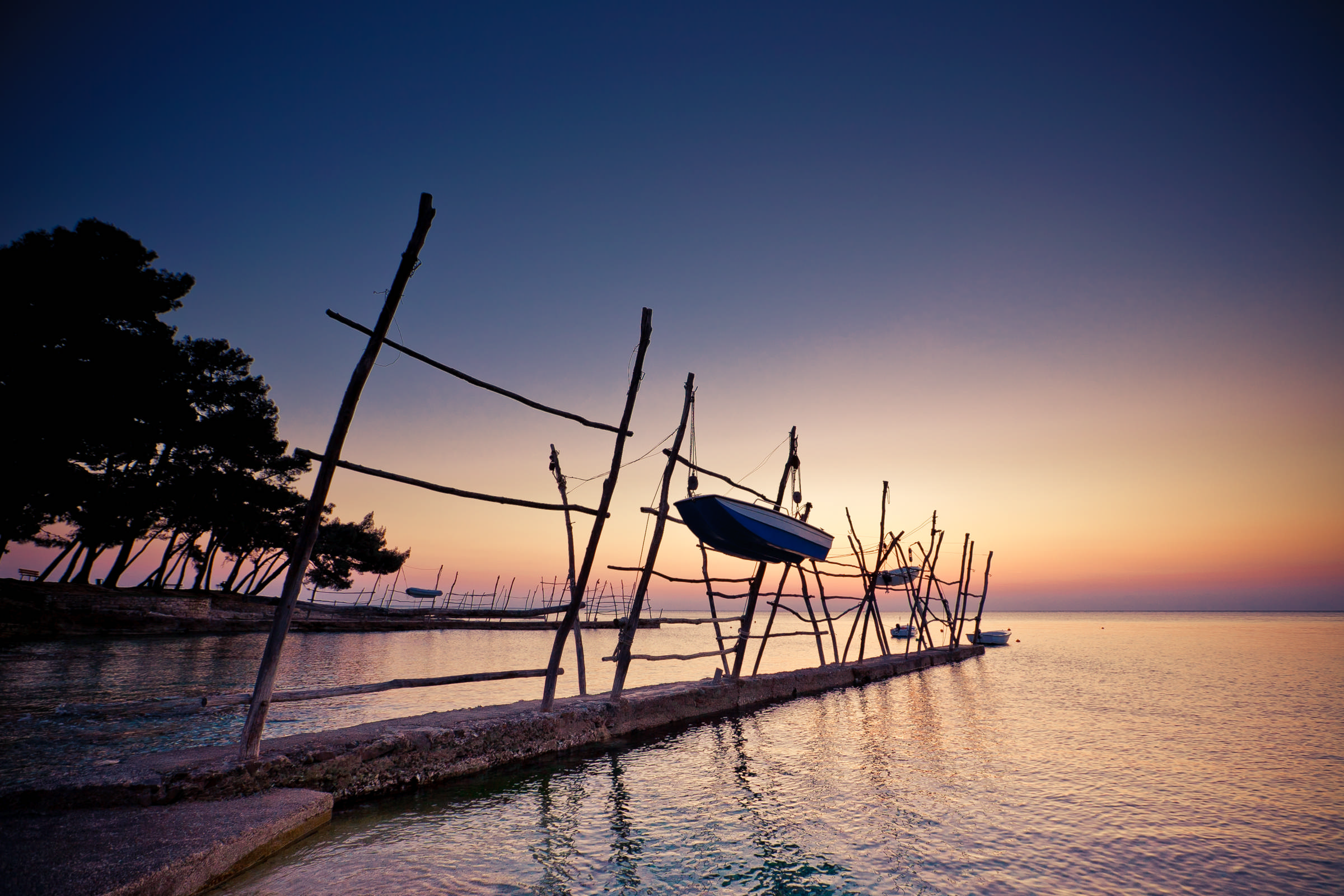 Savudrija © Mario Romulić
Savudrija © Mario Romulić
Nowadays fully automated and monitored by a single keeper, the lighthouse isn’t that much of a novelty anymore, but is still a beautiful landmark and in itself a good enough reason to visit Savudrija. Let it also be known that the place boasts a pretty spectacular coastline, lined with pines and traditional fishermen's boats. The waters around Cape Savudrija are favoured by surfers and divers alike.
New Croatian Post Logistics Centre for Kvarner and Istria Opens
ZAGREB, 11 March 2022 - A new Croatian Post logistics centre for the Kvarner and Istria region, worth nearly HRK 60 million, was opened on Friday in the Kukuljanovo industrial zone in the Bakar area.
The 4,200-square-metre centre has areas for sorting, transporting and delivering mail, a distribution facility and workshops as well as a post office. Over 300 employees work at the new location.
A modern business centre for the Kvarner and Istria region will improve the quality of delivery in that area. Its construction completed the largest investment cycle of Croatian Post, and Istria and Primorje-Gorski Kotar counties now have one of the four most modern sorting facilities in Croatia, including facilities in Zadar and Osijek and the new sorting centre in Velika Gorica.
Sea, Transport and Infrastructure Minister Oleg Butković said he was pleased that a state-owned company had been a positive example of business for years and that Croatian Post was on an equal footing with the world's largest posts.
The minister said that global changes didn't surprise Croatian Post and that many investments in infrastructure and digitalisation had turned it into a successful modern company that had a great impact on the economy and encouraged the development and growth of overall logistics.
He said that Croatian Post had nearly 10,000 workers and more than 1,000 post offices, and that its annual impact on the Croatian economy was estimated at half a billion kuna.
The president of the Croatian Post Management Board, Ivan Čulo, said that the opening of the new centre completed the first real investment cycle of over HRK 1.2 billion, underscoring these were their own funds and ideas.
Čulo said Croatian Post was now an exceptionally modern company and that further development was expected.
He pointed out that parcel services were the company's focus and that Croatian Post was one of the highest quality companies in parcel distribution.
For more, check out our business section.
Wondrous Landscapes of Cape Kamenjak, Istria's Southernmost Point
March 5th, 2022 - Beaches, dinosaurs, gigantic swings and breathtaking views: the nature reserve at the southern tip of Istria truly has it all, and then some
There’s no better time to visit a popular summer destination than on a crisp windy day in early March: Cape Kamenjak, the southernmost point of Istria, was ours to explore today. Located at the foot of Premantura peninsula not far from Pula, the area is a protected nature reserve, open for visitors all year round.
South of Premantura village, you’ll find no accommodation facilities or camping grounds. Save for a few bars scattered along the coast, the landscape is almost unspoiled by human hand. Thirty kilometres of rugged coastline full of dreamy coves and pristine beaches, accessed by a handful of gravel roads.
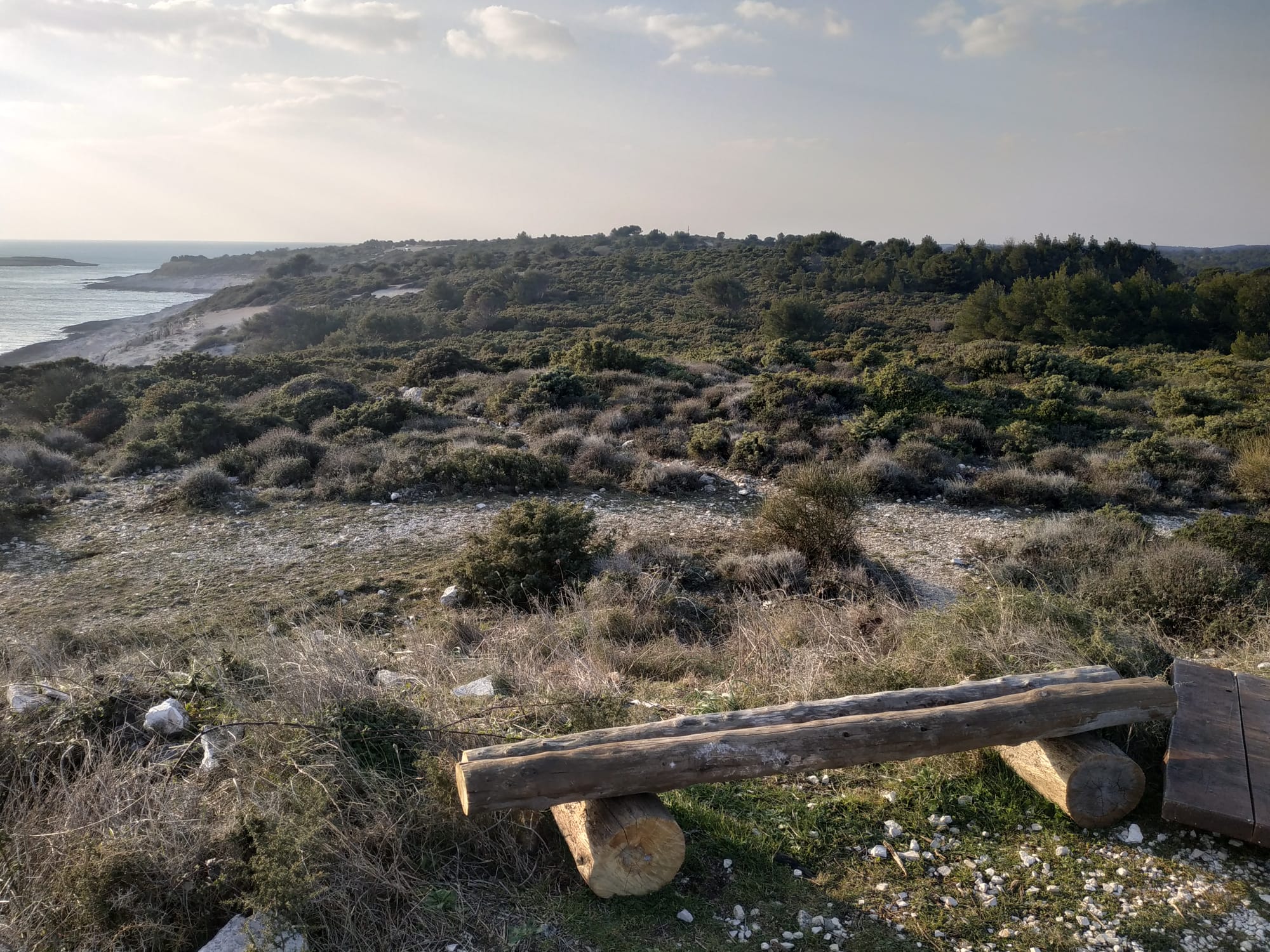
A nature lover’s dream, the reserve is home to 600 plant species including 30 orchids, two of which are endemic to this area. Wildlife is diverse and thriving, and it has apparently always been that way: fossilised dinosaur footprints were found at the south of the peninsula, dating back 98 million years.
Fans of active vacations will find plenty to do here, from walking and cycling to kayaking, surfing and cliff diving - there are even sunken ships to discover off the coast of Kamenjak. You’ll also find several educational trails, with one located at Upper Kamenjak accessible to the blind and visually impaired.
It’s a phenomenal destination, one that unsurprisingly draws a crowd in summer. On a day like this, however - 5 degrees Celsius, bura wind lashing at full speed - what you really want to do is use this precious opportunity to soak in the view from the southern tip of Istria with no one else around.
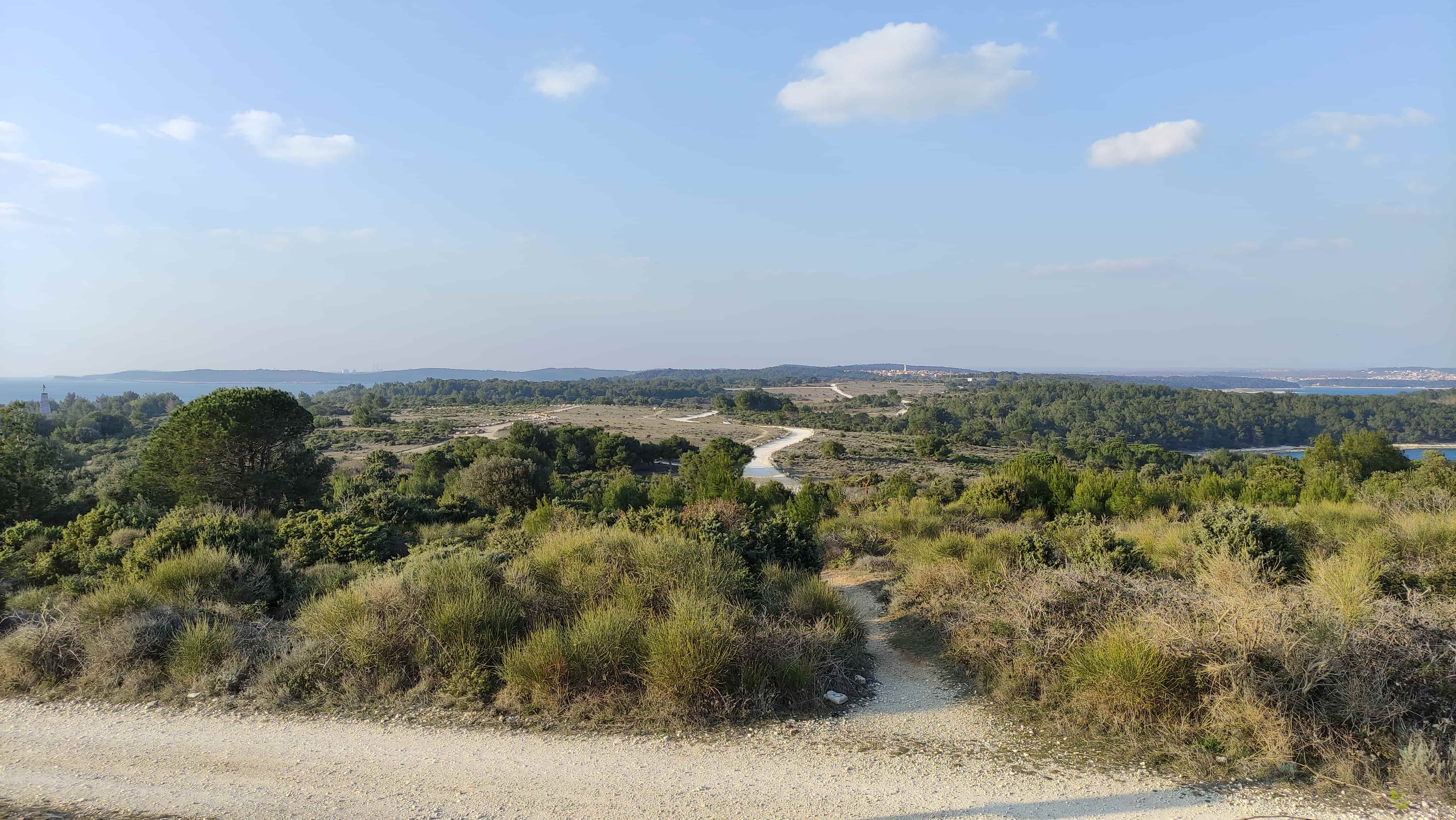
On our way to Cape Kamenjak, we passed through the maze that is the Safari bar, a charming ensemble of seating areas and quirky playscapes hidden away in a wooded area near the coastline. Closed for the winter, the place looks as if we stumbled upon a hideout on a desert island:
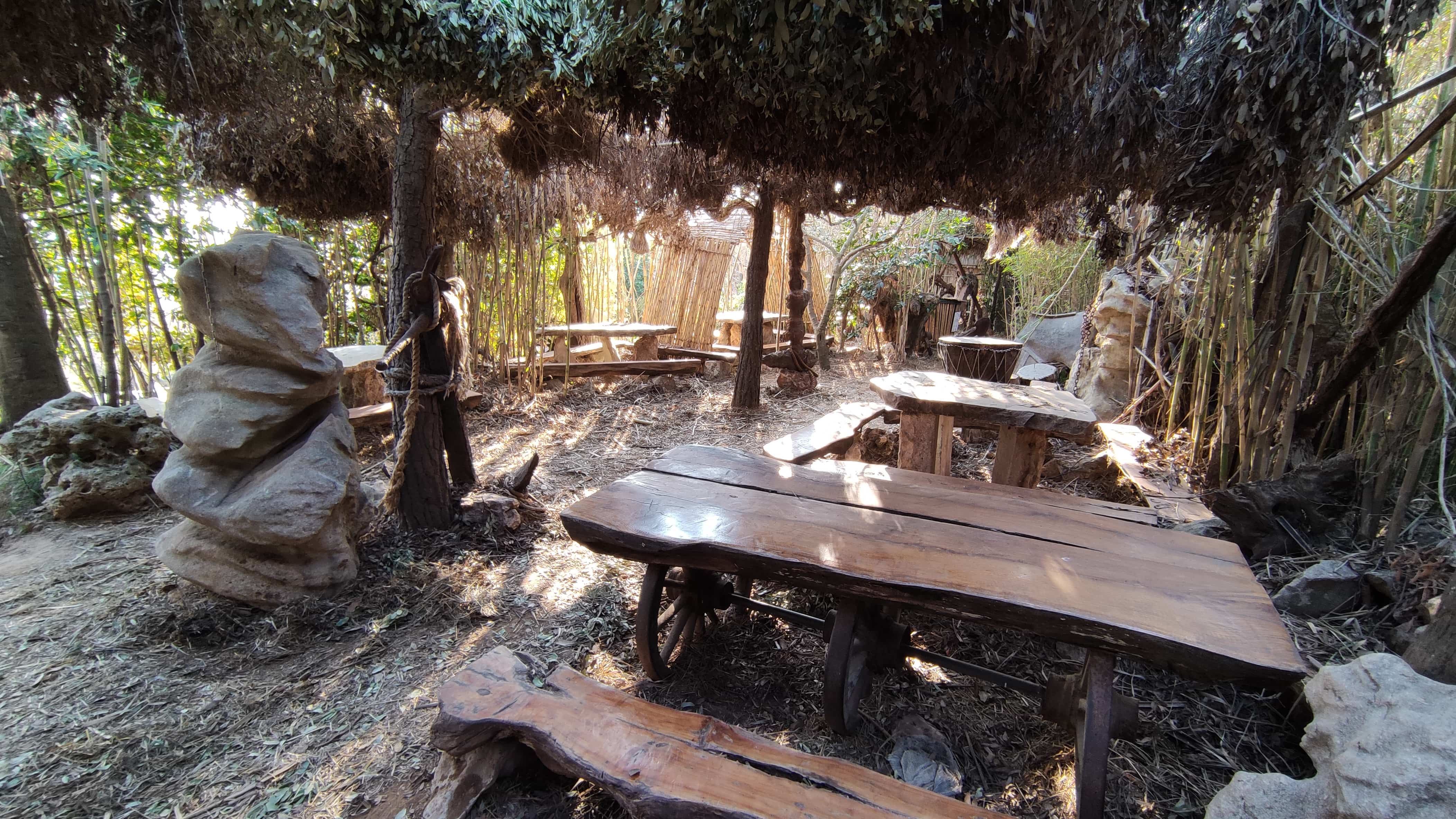
No complaints here: we were happy to sniff around, as it’s virtually impossible to score a table in peak season, let alone try out any of the other fun-looking features of the place. Such as this enormous swing set:
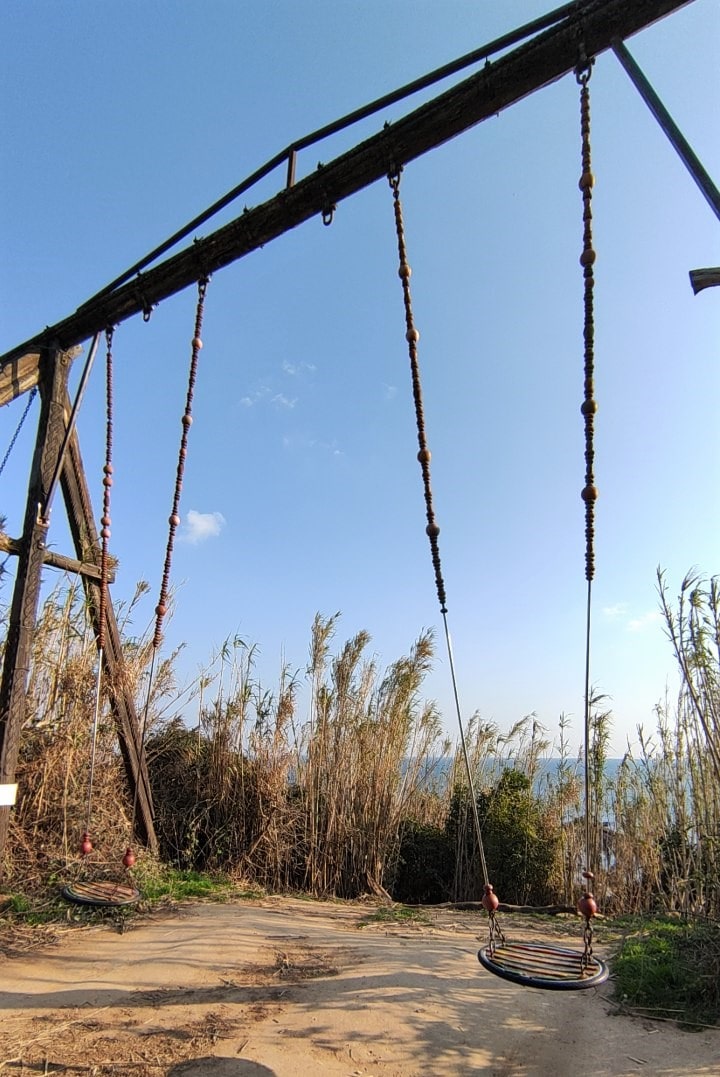
Or this slide:
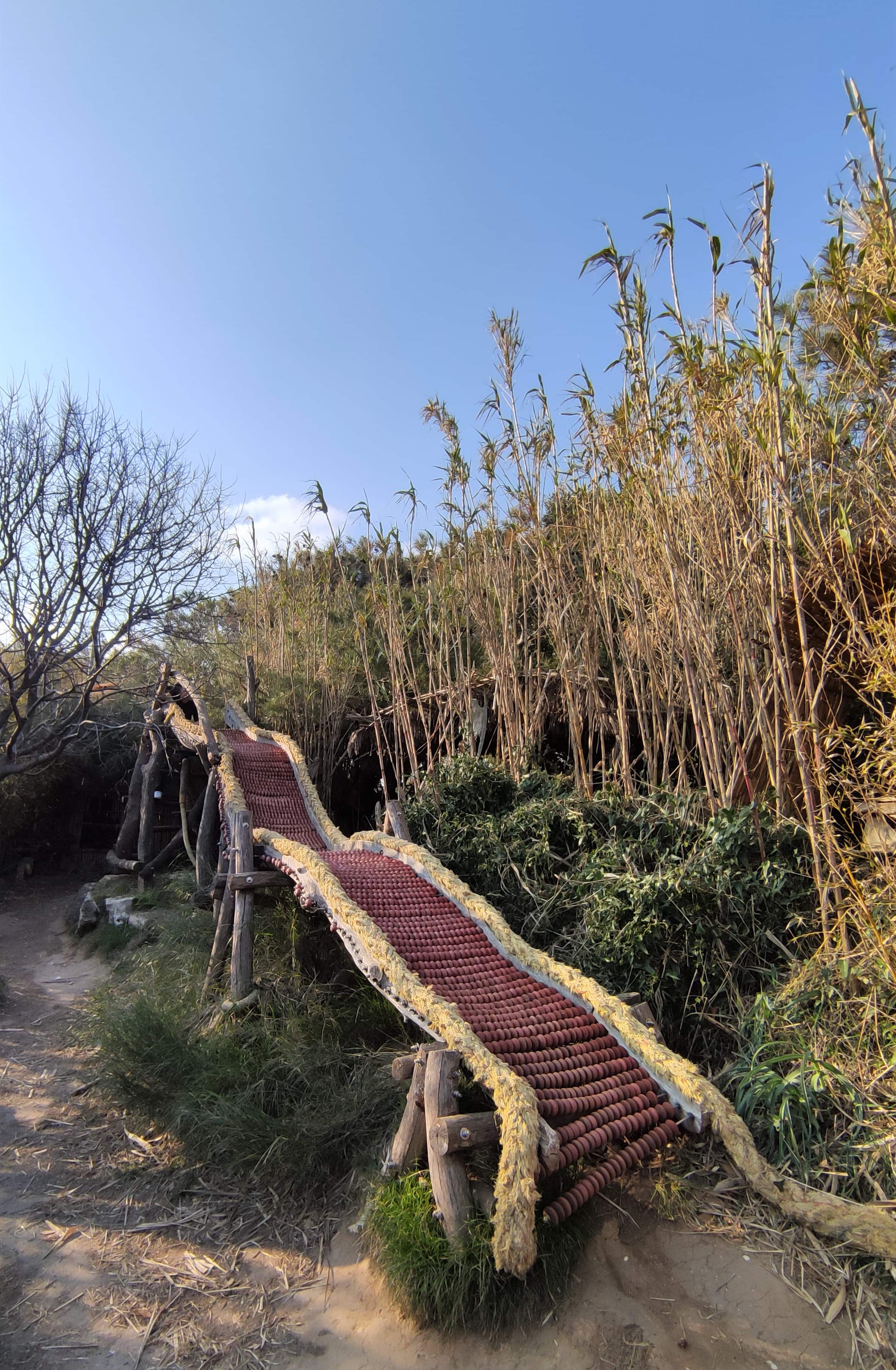
Or any of the other structures that make Safari a playground for children and adults alike. What a treat to have all to yourself! And once you make your way through the last patch of tall grass and stumble out slightly disoriented, you’ll be greeted with this:
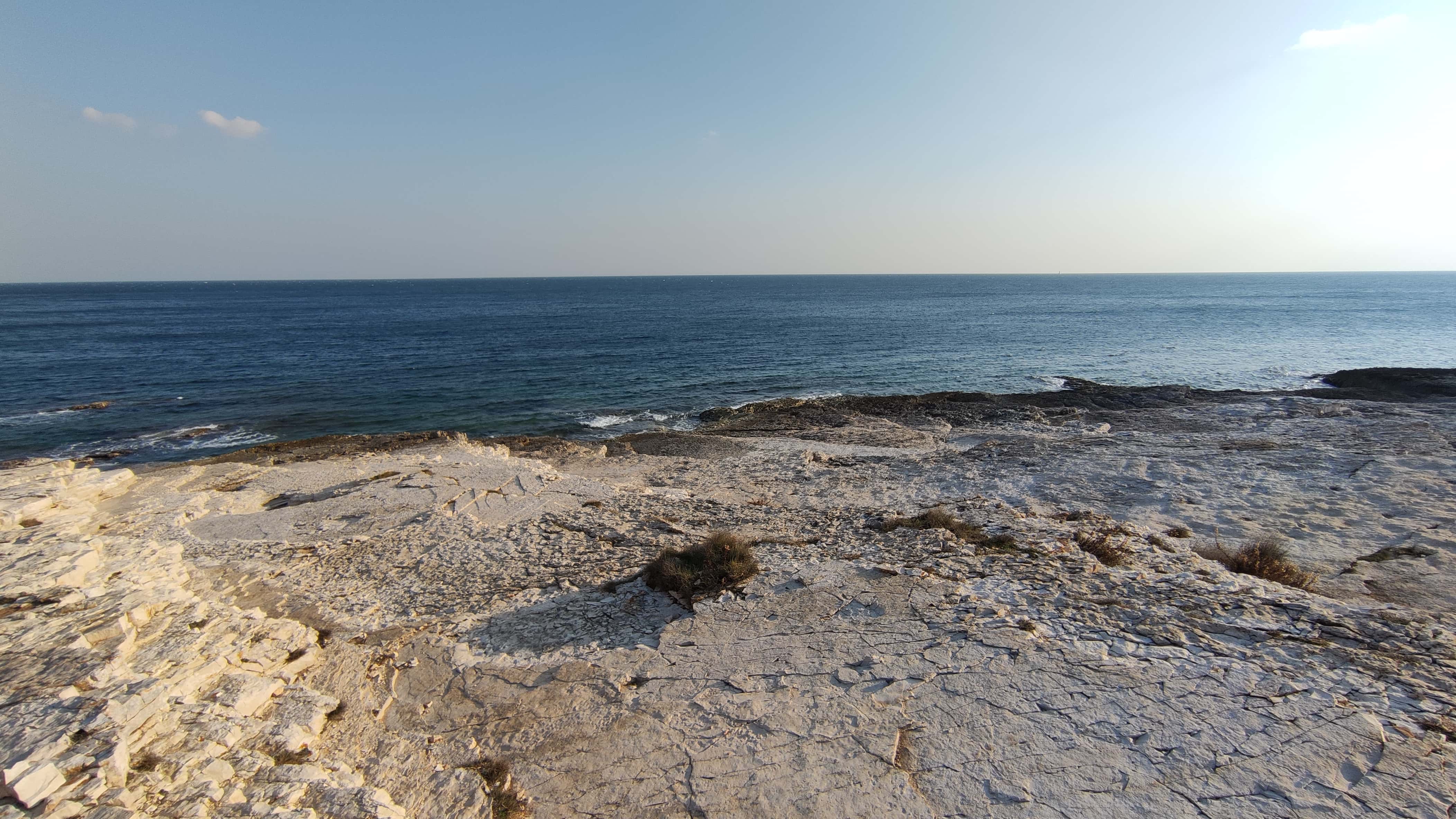
Sublime.
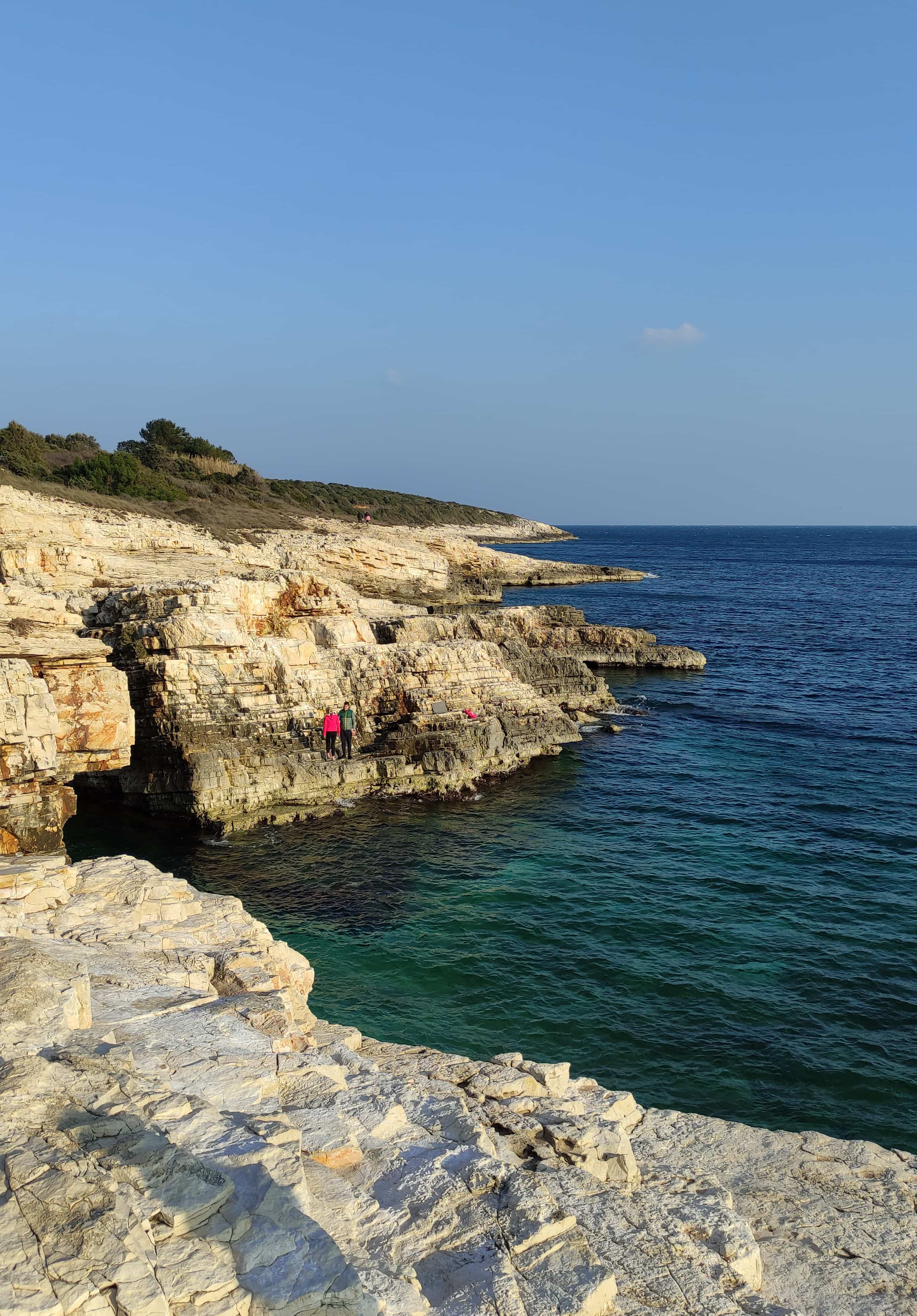
Cape Kamenjak is actually a bit further to the east, and you can bet we made our way there as well - no sense in exploring Premantura without actually stepping foot on its southernmost point.
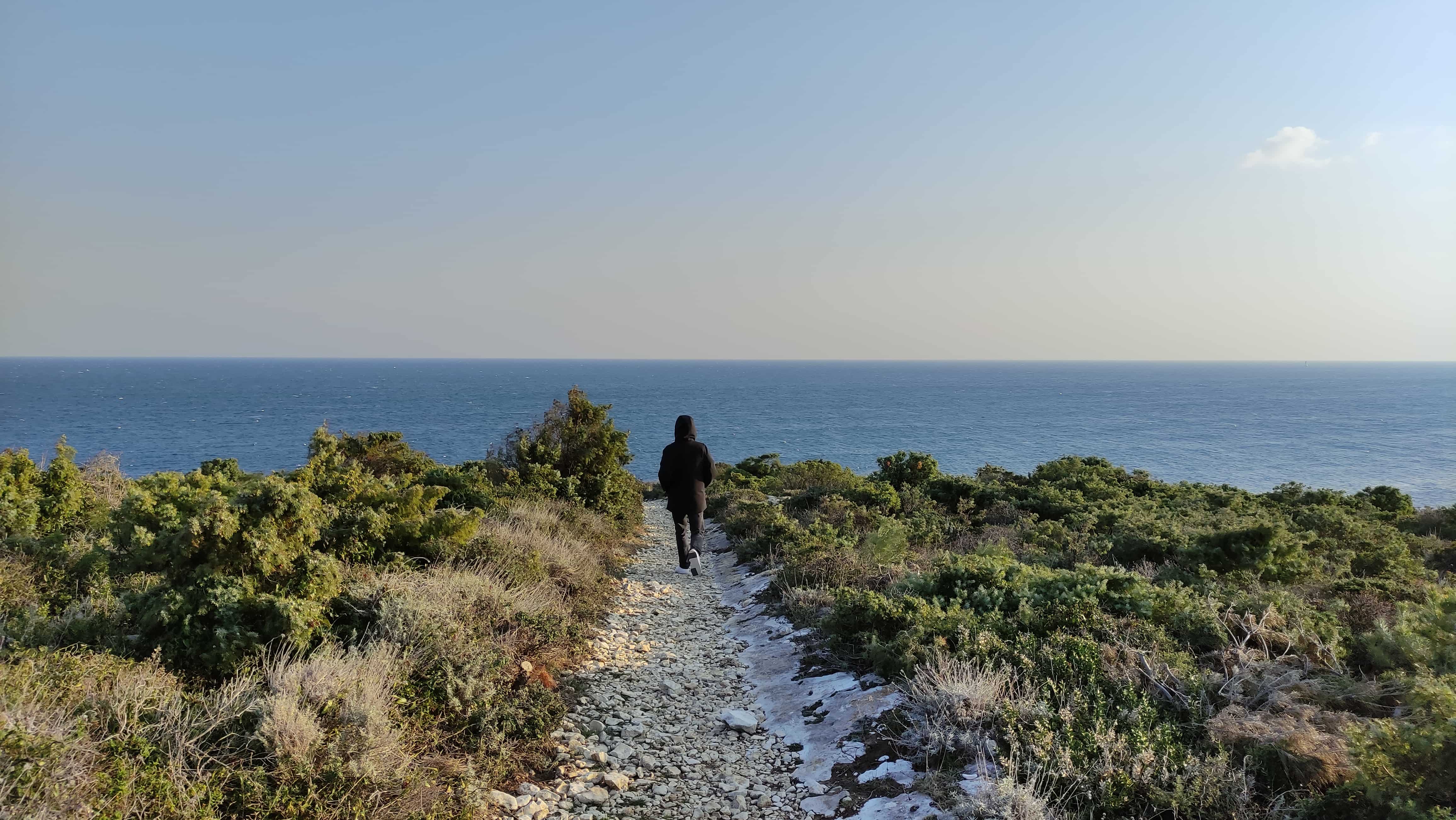
It’s a rewarding trek: only the vast open waters, as far as the eye can see.
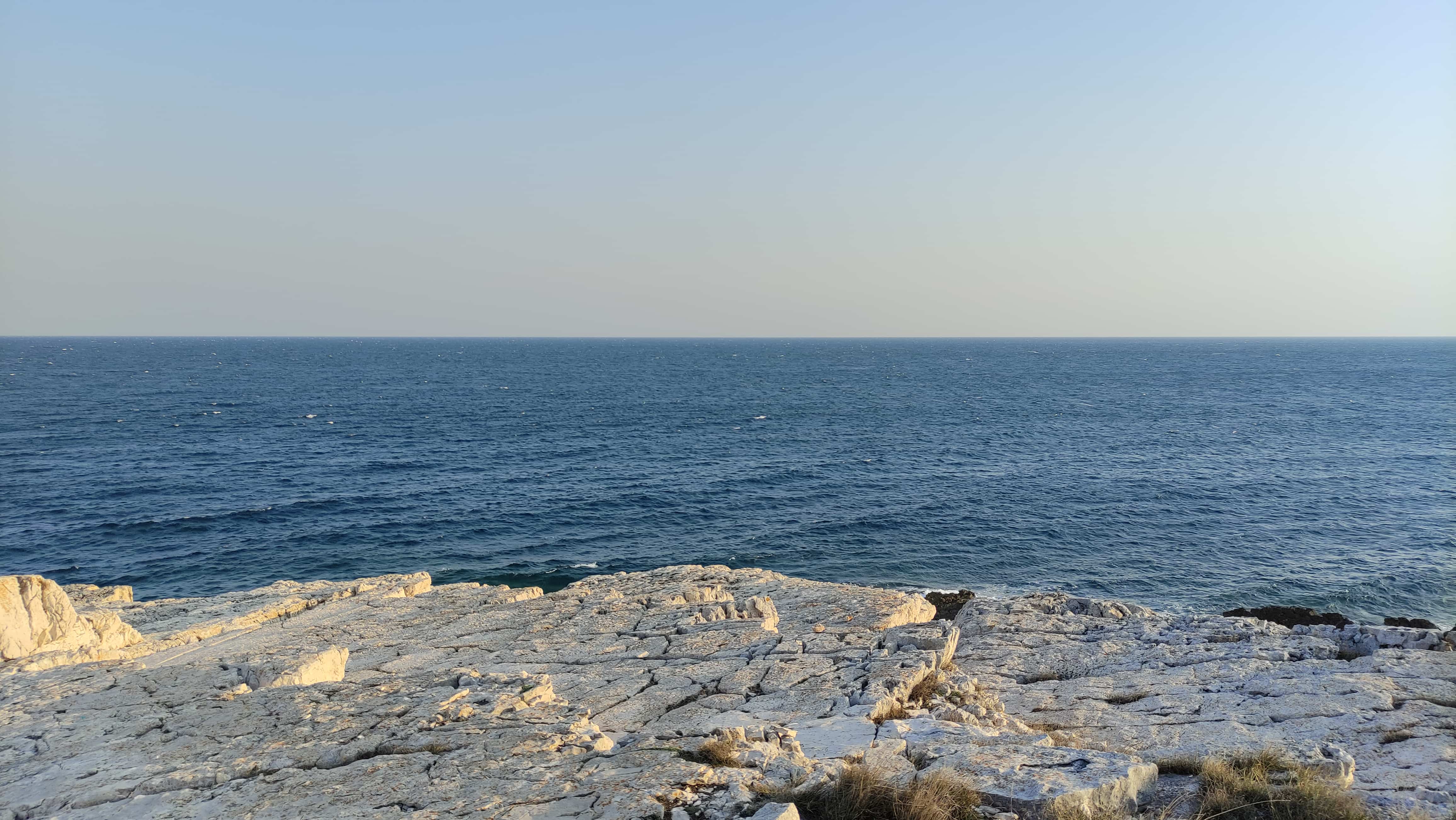
It's truly something else, and we wholeheartedly recommend visiting the reserve if you’re staying in Istria. Kamenjak is accessible by car and bike from the nearby Premantura, and can also be reached by boat.
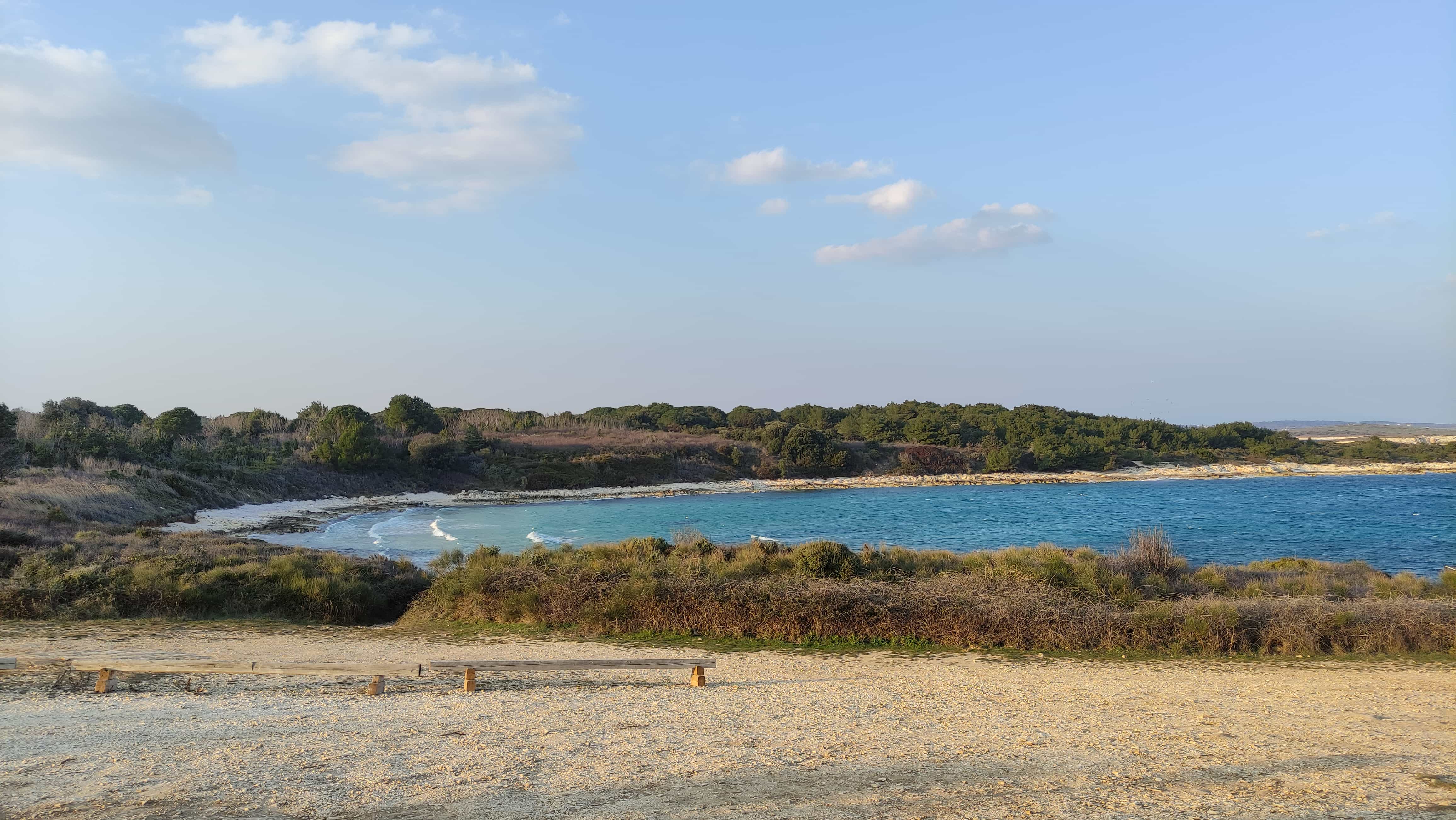
Entrance is free for cyclists and hikers, but you'll have to pay for a day pass if you wish to enter with a motor vehicle in the tourist season. In winter, there’s no charge and you’re free to drive around and park in the area.
Russians Living in Istria Demand For Ukraine War to End
ZAGREB, 5 March 2022 - Russians living in Pula and Istria held an anti-war protest in Pula on Saturday, carrying banners which said "Peaceful sky for all children", "Ukraine, the Russian people is with you" and "Putin is war".
About 30 protesters, carrying the Ukrainian flag, said they did not agree with Russia's policy and its attack on a sovereign country.
"We, the Russian people living in Croatia, can't stay indifferent. We are against the senseless, destructive war, against death on both sides, against the aggression of Putin and his supporters on Ukraine, on its peaceful citizens," they said.
"This war is a disaster not just for Ukraine but for Russia, too. It could be a disaster for the whole world, for the whole humankind. That's why we support Ukraine's civilians and condemn Russia's illegal attack on the territory of a sovereign state. We are here and advocate our common future, the future of our children," the protesting Russians said, demanding that the war end.
For more on the Ukraine crisis and Croatia, as well as breaking news, follow our news section.
Istrian Olive Grower Loses Land Bid as Ministry of Agriculture Backtracks on Tender Specifications
March 3rd, 2022 - Sandi Chiavalon, one of Croatia’s leading olive oil producers, was looking to invest around seven million kuna into a new olive grove in Istria.
Renowned olive grower Sandi Chiavalon was planning to lease 30 hectares of land in the Vodnjan area, close to another large olive grove owned by Oio Vivo, where he would plant nearly 10,000 olive trees and hire four new workers to manage the operation.
As reported by Glas Istre/Bojan Žižović, his plans fell through. In a strange turn of events, the Ministry of Agriculture didn’t approve the decision of the City of Vodnjan to lease state-owned land to Chiavalon, whose oil is produced in Vodnjan and exported to 23 countries worldwide.
This is a major agricultural project which, according to Chiavalon, would be beneficial for the wider community, including the national and city budgets. The state, however, says that Chiavalon and other local farmers cannot lease more than ten hectares of state land at once, as stipulated by the City of Vodnjan.
The decision of the state comes off as petty, as consent could have clearly been given in this case. As Chiavalon explained, the City’s land management plan indeed states that up to ten hectares of land can be leased to one party, but exceptions are allowed as long as it’s a single plot - as is the case here. The land in question is a single plot of about 70 hectares, divided by the City into six agricultural units of which Chiavalon was looking to lease three.
In the tender, whose content was approved by the Ministry of Agriculture, it was stated that whoever applies for one plot can lease up to 40 hectares of land on the said plot. Now that the tender is closed, the Ministry changed the tune and said that a maximum of ten hectares can be leased on the plot in question. As things stand, Chiavalon’s choices are to either lease only ten hectares or abandon the project entirely.
‘They called us from the City to have us choose which of those three plots of ten hectares we would lease. That doesn’t come close to what I wanted to do here - introduce an automated system, a completely new technology for grove maintenance… The question is whether we will take those ten hectares at all, we have to make an economic analysis of whether it’d be profitable to do it all on a land of that size. There are various systems in olive growing nowadays; intensive groves are robotically managed and processed. But for something like that we’d need a single large plot of land. We currently own 68 plots at 12 different locations. In those conditions, you can engage in organic olive growing only conventionally. When you have a single block of land, so to speak, such as Oio Vivo, only then can you introduce modern automated systems’, said Chiavalon.
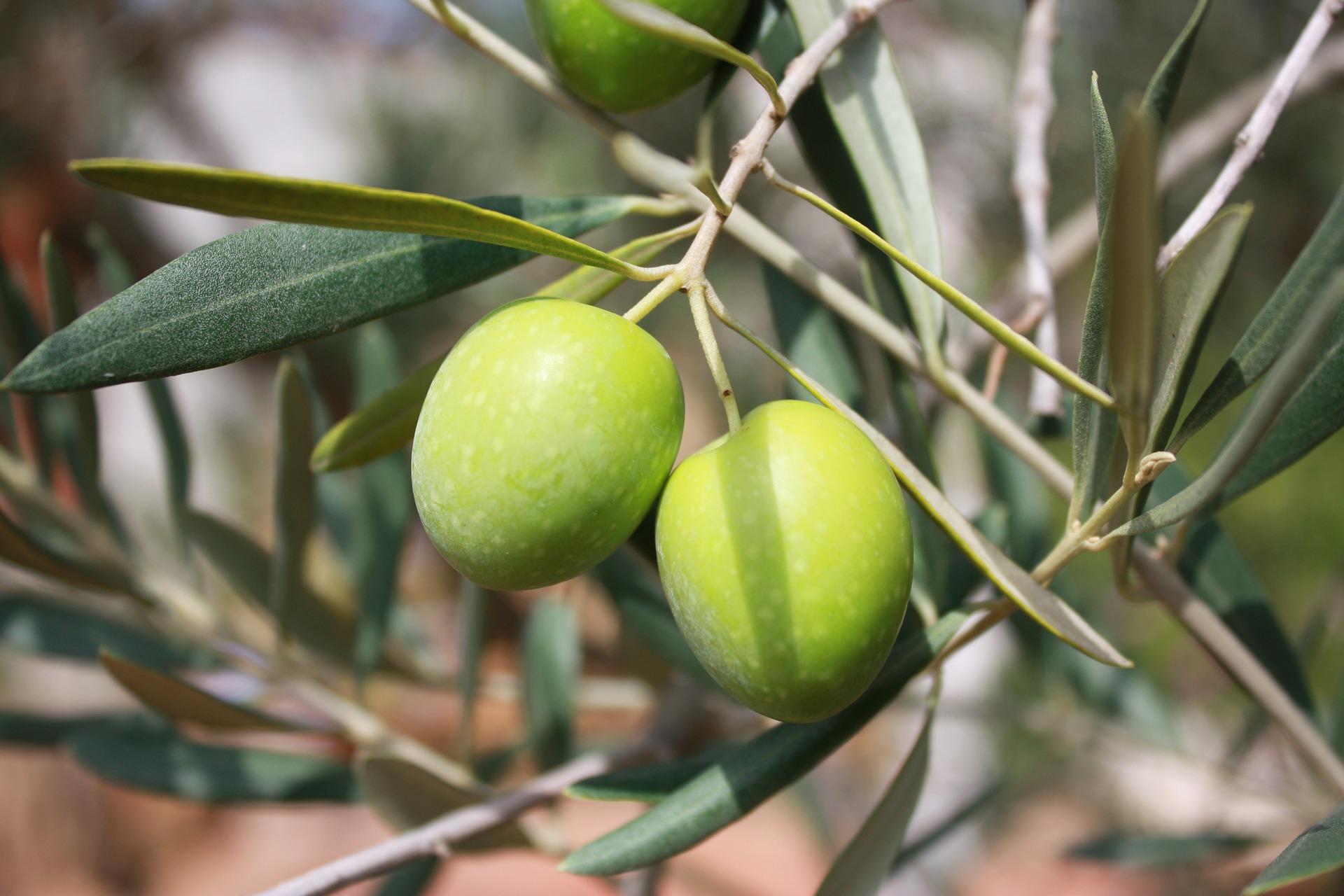
Asked whether there was a chance of him leasing more than ten hectares in this area in the future, Chiavalon said he might if a new tender was announced. ‘As we had to drop out, some other people would probably apply to get the land. However, the question is who can make it operational because it’s a considerable investment’, said Chiavalon.
The olive grower from Vodnjan would have doubled the count of his olive trees if he got the lease he was going after. He currently owns 30 hectares of land, but as mentioned above, split between 12 different locations, which results in production costs 20 to 30 percent higher than if he were to cultivate a single parcel of that size.
He says there’s always the option to increase their output by purchasing produce from other farmers, but they want to grow as much of their own produce as possible.
Asked who was to blame for what happened, Chiavalon said the problem might lie in the lack of communication between the Ministry and the City of Vodnjan. ‘But the City did not come up with the tender out of thin air, it had to do so with the consent of the Ministry, whose clerk then said it wasn’t implemented well. If it had come to another clerk, it would have probably passed.’
He also pointed out that the laws concerning agricultural land keep changing and aren’t implemented efficiently. ‘This tender was announced a year and a half ago and was not completed in that time. In the meantime, the plot could have been cleared and a new grove planted. In 20 years, there were only three tenders for the lease of state-owned agricultural land, which is a disaster’, he said, adding that at least one tender should be announced every year given how much uncultivated land there is in the area. ‘There are more than 3,000 hectares of uncultivated land in Vodnjan. There’s plenty of land for everyone who wants to work in agriculture. You just need to have the resolve’, said Chiavalon.
Underwater Exploration: Istria to Brand Destinations as Best Spots for Snorkeling
March 2nd, 2022 - A map of the seabed containing all the best spots for snorkeling is in the works
Did you know that there’s no specific word for snorkeling in the Croatian language? Now that you do, it shouldn’t come as a surprise that so far, not much thought has been given to the prospect of branding destinations as attractive snorkeling spots.
As a low-effort activity that doesn’t require any special skills or a full set of scuba diving gear, snorkeling appeals to all generations. It would make sense for Croatia, a country where tourism promotion is largely based on the sun and sea, to promote destinations that are ideal for this type of underwater exploration.
Things are looking up, though, as the Administrative Department for Tourism of Istria County, along with numerous tourist boards in the region, embraced an initiative to create a map of the seabed which would feature all snorkeling-friendly locations. The initiative is seen as a good opportunity to develop a new tourism product on the Istrian peninsula.
A round table was held yesterday, bringing together representatives of the tourism sector and experts involved in marine conservation, writes Glas Istre. Various opinions were voiced at the meeting, concerning all the things that need to be taken into consideration when developing this product. It was emphasised that it’s important to find the right balance between the potential benefits of such an initiative and preservation of the sustainability and biodiversity of our waters.
‘The maritime area of Istria is an important natural resource that we need to preserve, whereas on the other hand it has exceptional potential for tourist valorization. It is for these reasons that the initiative was launched to create a new tourism product based on the principle of sustainable and responsible tourism development’, said Nada Prodan Mraković, the head of the Administrative Department for Tourism.
The round table was organised as a sort of professional brainstorming, aiming to ensure that development of this product is well thought-out so that any potential issues and mistakes could be avoided.
‘The sea is a very sensitive environment, and we can and must promote the importance of its conservation and protection as we develop this new product’, said Prodan Marković.
Director of the Istria County Tourist Board Denis Ivošević brought attention to the importance of media promotion that Istria as a destination receives by generating new tourism development projects.
‘It is very important for every tourism development project to be well-communicated. The project we are talking about today is definitely very creative and innovative, and since it has a direct link with sustainable and responsible development, it’s definitely a project that could be met with approval of the public’, said Ivošević.
The person who came up with the initial idea is Barbara Unković, owner of the Underwater Affair company and the round table moderator. As she says, diving has been a passion of hers for three decades.
‘My life story is intertwined with the sea, and the experience of working with tourists has shown me that it’s difficult to explain to people where you’re taking them diving. That’s why I started drawing maps of the seabed to make the task easier. The concept of a project related to snorkelling came to me during lockdown, when the idea was born to use maps to introduce more people to our underwater environment and make them interested in it’, she said.
The idea was shared with institutions involved in tourism development in Istria, and it drew a lot of interest thus far. Some tourist boards took steps to develop this particular segment of tourism on their own, Melita Peroković of the Fažana Tourist Board being one of the pioneers.
‘We’ve recognized the potential of snorkelling when it comes to promotion of our extremely rich history, cultural heritage and tourism offer. The Archaeological Museum of Istria (AMI) recently conducted research at a hook-shaped ancient Roman pier which, after the sea level rose more than two metres over the last two millennia, now lies submerged in the area in front of Villa San Lorenzo. Together with the AMI, we researched how this archeological site could be valorised for tourism purposes through the means of snorkeling, and we were the first in Croatia to receive approval from the Ministry of Culture to allow snorkelling above a protected cultural asset’, said Peroković.
Croatian Traditional Jewellery: Istria's Medieval Earrings, Rediscovered
February 25th, 2022 - Medieval earrings discovered on several archaeological sites in Istria served as inspiration for authentic souvenirs: beautiful replicas in silver and gold, made by local artisans
Our ancestors seem to have loved shiny things as much as we did: traditional garb in all parts of Croatia included precious jewellery pieces such as earrings, bracelets, brooches and pendants.
Some date back to medieval, ancient or even prehistoric times, and are nowadays displayed as museum exhibits. Others have stood the test of time, with traditional motifs passed down from generation to generation and remaining popular accessories to this day.
And then there’s some traditional jewellery that falls into both these categories. Medieval earrings found on several archaeological sites in Istria were rediscovered in recent times and recreated with beautiful replicas in silver and gold, made by local artisans and whoheartedly embraced by the public.
The initiative to revive the ancient heritage of Istria in the form of jewellery largely came from goldsmith Klaudija Vorić, owner of Claudia Zlato jewellery shop in Svetvinčenat, now closed. Since the early 2000s, Vorić had been making jewellery inspired by traditional Istrian symbols. About ten years ago, she launched the initiative to make replicas of historic earrings in order to create high quality souvenirs for each given destination in cooperation with local authorities and relevant tourist boards. Vorić was the one responsible for the revival of Žminj, Buzet and Barban earrings on this list, and it's only right we give credit where credit is due.
Join us on a little themed tour of Istria as discover accessories of times past that now have their modern versions, readily available to all who wish to wear a piece of history.
Žminj earrings / Žminjski rićin
It’s said that all the roads in Istria lead to Žminj, so it only makes sense to start our journey in this picturesque inland town.
Earrings and rings were uncovered at the early Croatian cemetery in Žminj, showing that the local women used to wear jewellery as early as in the 9th century. How’s that for tradition?

The earrings found at the necropolis were part of the rural folk costume worn in the Žminj area in the 9th and 10th centuries. They were made of silver and bronze and are grouped into several categories according to design and origin, with the most prominent type featuring so-called ‘strawberries’, hollow granules made of silver with elements of filigree and mesh. Some feature closed hoops, pointing to the fact they were most likely worn interwoven in hair or looped on hair strings.
Nowadays, the original finds are kept at the Archaeological Museum of Istria in Pula. They inspired a beautiful authentic souvenir, the Žminjski rićin (Žminj earring), designed after the medieval pieces and slightly modified to fit modern standards of jewellery wear.
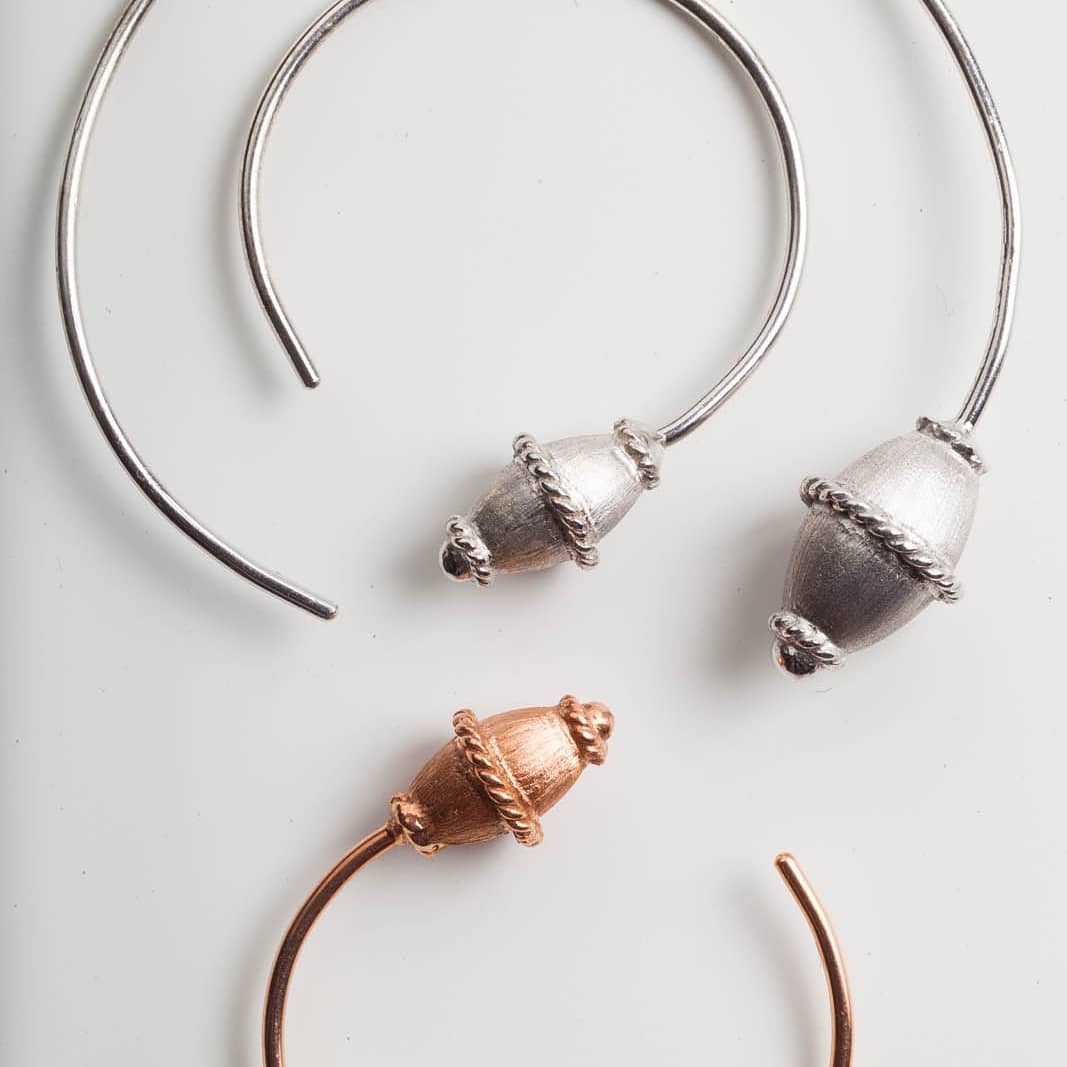
The gorgeous pieces are nowadays made of silver and gold, and are manufactured in Pula by David jewellery.
In Žminj, earrings and rings are available for sale at the floral studio Heidi as a unique tourist souvenir, complete with a leaflet introducing the history of the Žminj jewellery in three languages.
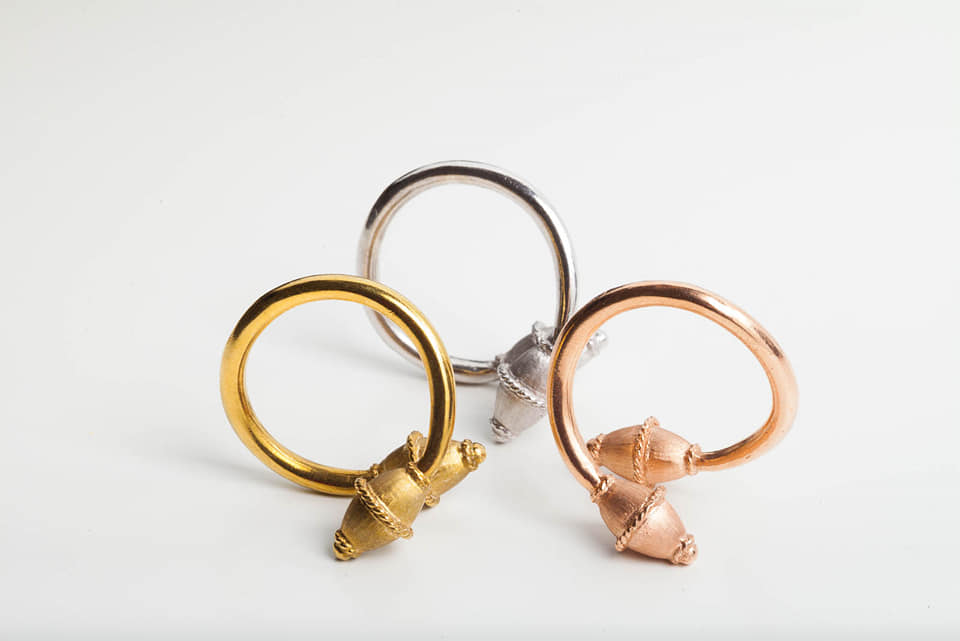 Žminj rings / Zlatarna David Facebook
Žminj rings / Zlatarna David Facebook
Barban earrings / Barbanski rančin
Earrings dating to the 11th century were unearthed in the small town of Barban. The medieval earrings have the form of a hoop with three small beads adorning the bottom part.
Similar to the ones found in Žminj, they were determined to be a part of folk costume typical for the period between the 11th century, when Istria was a part of the Holy Roman Empire, to the beginning of the 14th century when the region was taken over by the Venetian Republic.
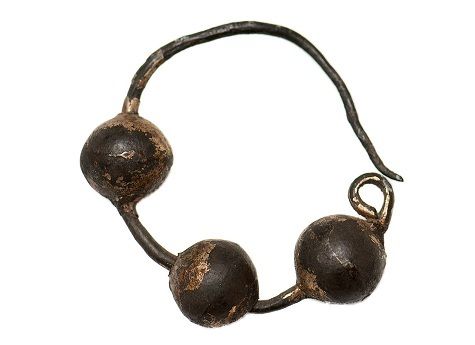
Medieval Barban earring / Archaeological Museum of Istria
The initiative to bring the traditional Barban earrings into the modern era was also launched by Claudia Zlato jewellery, with the project devised by Jasminka Benazić and executed in cooperation with the Archaeological Museum of Istria, the Municipality of Barban and the Barban Tourist Board.
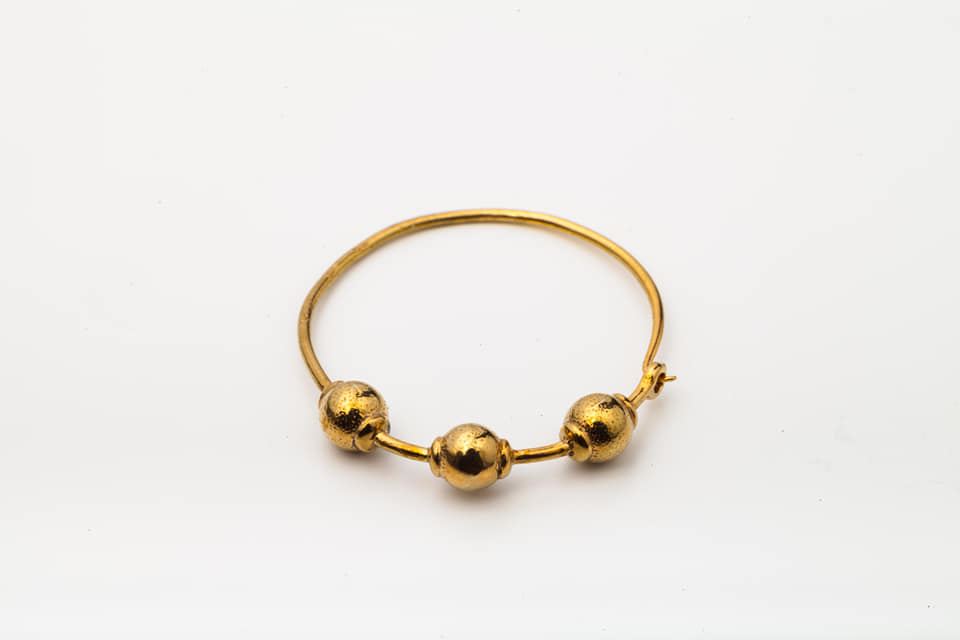 Barban earring / Zlatarna David Facebook
Barban earring / Zlatarna David Facebook
The result are beautiful wearable earrings, made in several sizes and materials and inspired by the cultural heritage of Barban.
Dvigrad earrings / Rančin Dvegrajka
On to Dvigrad, a ruinous medieval town in Limska Draga valley, where two unique types of earrings were discovered, made of bronze and dating to the 9th century.
Both types are simple hoops, one with a thin wire wrapped around the bottom part (see image below), the other adorned with a bead. Several other kinds of earrings were found in the Dvigrad area, but since they share features with various types discovered on archaeological sites elsewhere in Istria, it was decided to only make replicas of the two designs unique to Dvigrad.
The wearable souvenirs are made by David jewellery from Pula, whose owner, goldsmith Luiđi Đinić, said it takes up to five hours to make a single pair. The delicate hoops are entirely handmade, and available in silver, silver-gilt, and silver gilded rose gold versions.
Like the other artefacts, the historic Dvigrad earrings are kept at the Archaeological Museum of Istria and were declared a cultural asset of the Republic of Croatia back in 1968.
Buzet earring / Buzetska naušnica
Delicious truffles aren’t the only precious thing found in the north of Istria, as the history of the hilltop town of Buzet and its environs goes all the way back to the Bronze Age.
It doesn’t come as a surprise that beautiful historic jewellery was discovered in Buzet as well, a type of bronze earring dating to the 7th century and known as the Buzet earring in archaeological literature.
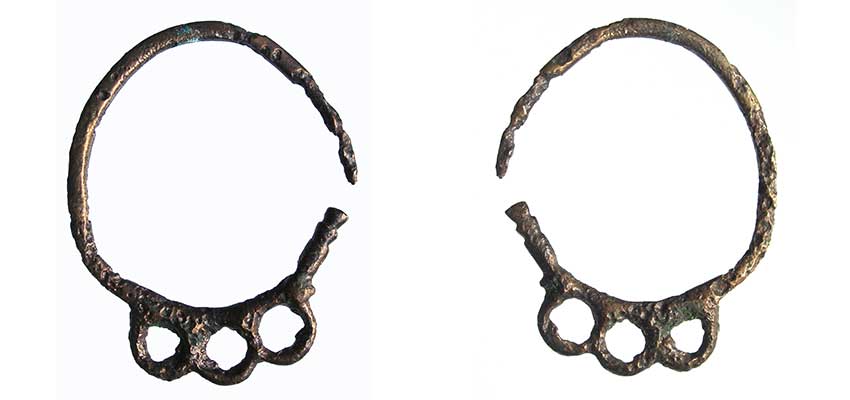 Medieval Buzet earrings / Buzet Tourist Board
Medieval Buzet earrings / Buzet Tourist Board
Bronze earrings are most commonly found at the early medieval burial grounds of the native population and the Illyrian-Celtic people who inhabited the area between Buzet and the west coast of Istria.
The original pieces are kept at the Regional Museum of Buzet, and a silver replica was created as an authentic souvenir of Buzet. Two kinds are available, one being a near identical copy of the medieval earrings, other slightly modified and equipped with a clasp to be more easily wearable.
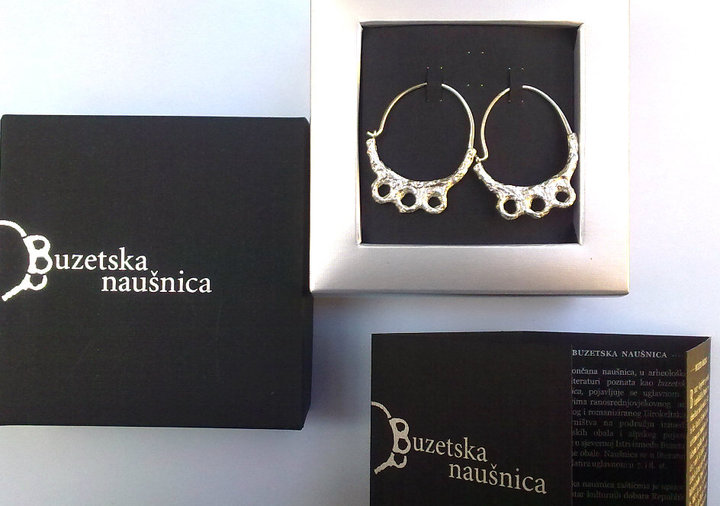 Buzet earring / Buzet Tourist Board
Buzet earring / Buzet Tourist Board
Umag earrings / Umaška naušnica
We’ll end our little tour in Umag, a coastal town in the north-west of Istria. Although best known for the ATP tournament, Umag has much more to boast, including priceless historic finds such as the so-called Umag earring.
The bronze earring is shaped as an elliptical hoop adorned with three beads and a large engraved pendant, altogether cast in a one piece mold. It was found during archaeological research conducted in Umag in 2005, at the ruins of an early medieval church that burned down in the 9th century.
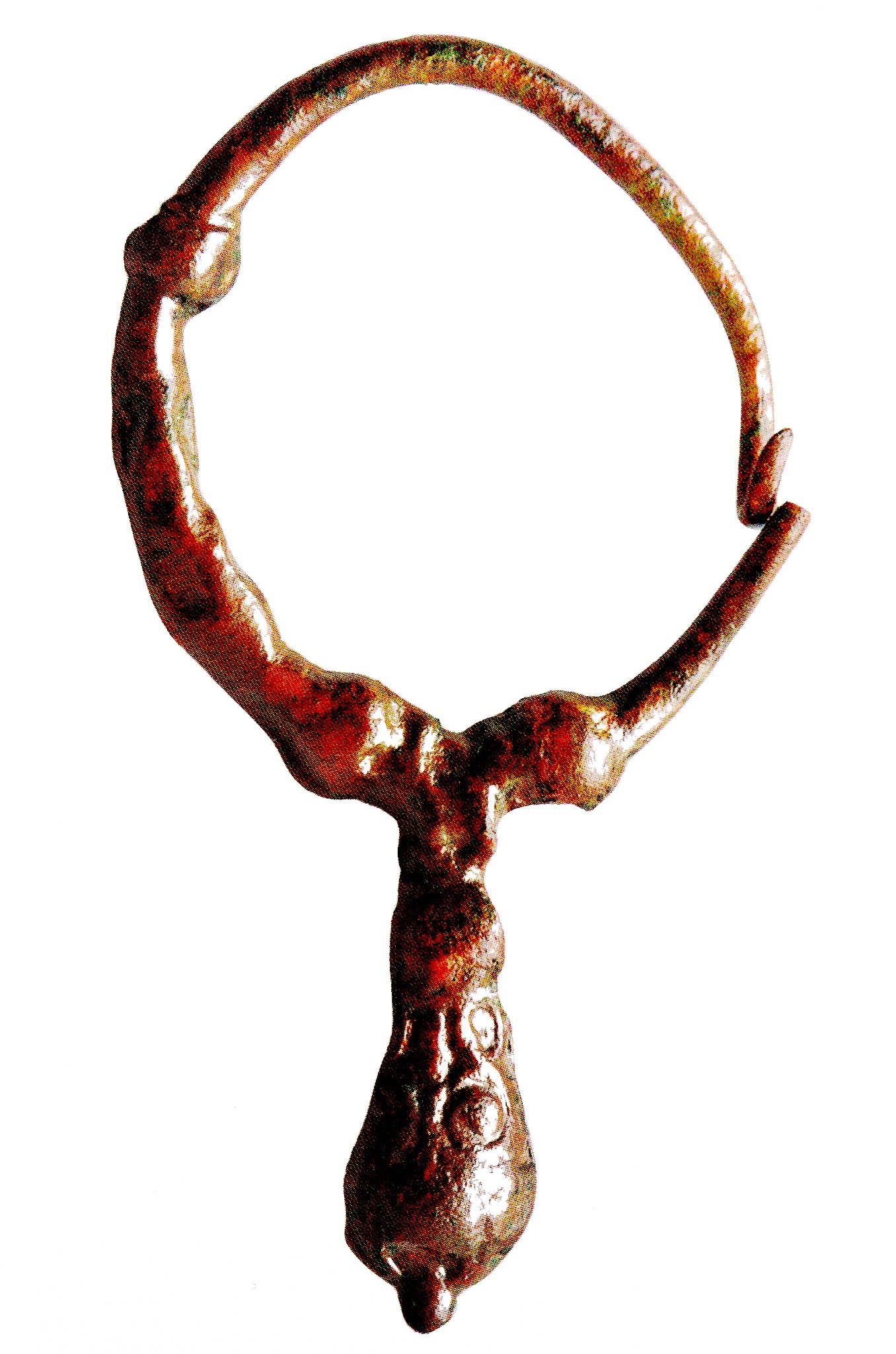
A silver replica was made by the local goldsmith and filigree master Njaci Široka, creating an original Umag souvenir that is available for sale in his shop.
Glassblowing School Inaugurated in Istria
ZAGREB, 22 Feb 2022 - The Zlatni Vitraj Artistic Glassblowing School was inaugurated in Stranići near Poreč, Istria County on Tuesday as the first of 22 events planned in Croatia to mark the UN International Year Of Glass 2022.
These are moments when the strength of a community, as well as of an individual, is felt, Culture Minister Nina Obuljen Koržinek said at the ceremony, thanking the Association for the Promotion of Traditional Arts, which founded the school, for including this project in the UN International Year Of Glass and thus helping Croatia to find an important place on that world map.
"It's a privilege when we have such enthusiasm and when there are people who make their life project so valuable that it will eventually contribute to the community, and we are here to support it. Croatia is one of the states with a truly representative antique glass museum in Zadar, whereby we testify to the continuity of artisanship as well as art in glass through the centuries," the minister said.
She added that the process of protecting glassblowing crafts in the Zagreb area as an intangible cultural heritage was under way.
The Zlatni Vitraj Artistic Glassblowing School was founded to rescue artistic glassblowing from extinction, said Josip Deutsch of the Glass & Art Association for the Promotion of Traditional Arts.
"With this event we celebrate the past, present and future of glass as a very transformative material," he added.
Kažuni, Traditional Stone Huts of Istria
February 21st, 2022 - Built entirely of stone, the cylindrical huts provided shelter to shepherds and farmers.
There’s no lack of magnificent architecture in Istria with all the masterpieces of times past preserved in this magical region. Think of the ancient Roman amphitheatre Pula Arena, the Euphrasian basilica in Poreč, or the countless bell towers standing tall on Istria's rolling hills.
And yet, none of the renowned monuments in Istria are as iconic as the humble kažun [ka-zhoon]. Essentially a trademark of the region, second only to the everpresent Istrian goat, the kažun is a traditional stone hut found all over central Istria, most commonly around the town of Vodnjan.
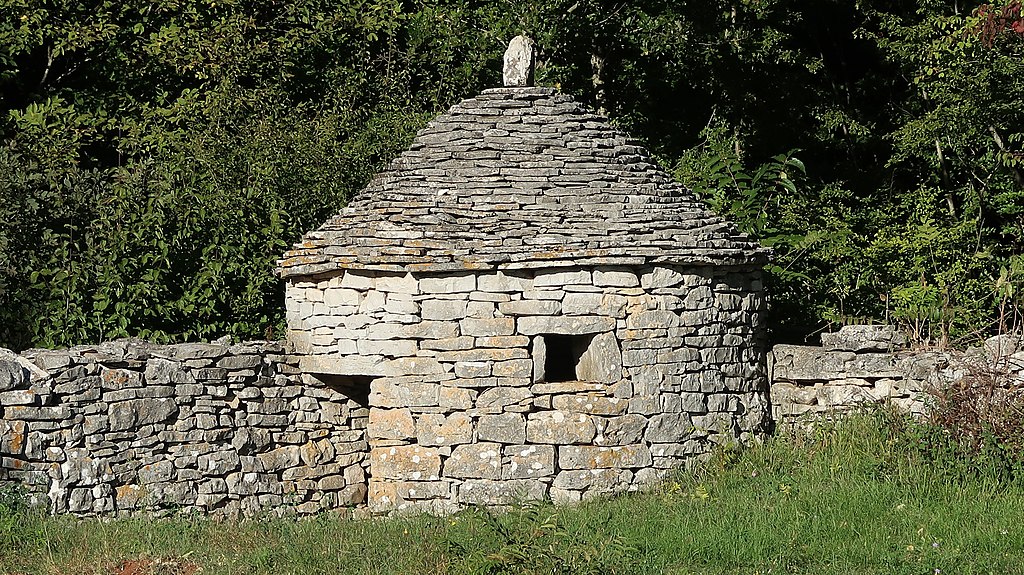 A kažun near Kanfanar, Istria
A kažun near Kanfanar, Istria
The kažun is a simple cylindrical structure built entirely of stone without the use of binding agents. They owe their distinctive appearance to a few rudimentary design features: they have a circular ground plan, a conical roof, and a small rectangular door. They vary in size, some are a masterful display of precision, some a bit more crude, some feature a tiny window or two, but overall, they’re unmistakable.
Their primary purpose was to provide shelter to shepherds and farmers who spent their days outdoors, working in the fields. A place to seek refuge from sudden rain or scorching summer heat, to have a midday meal and enjoy a moment of rest in the shade. They were also used as shelter for livestock, and at times for storage.
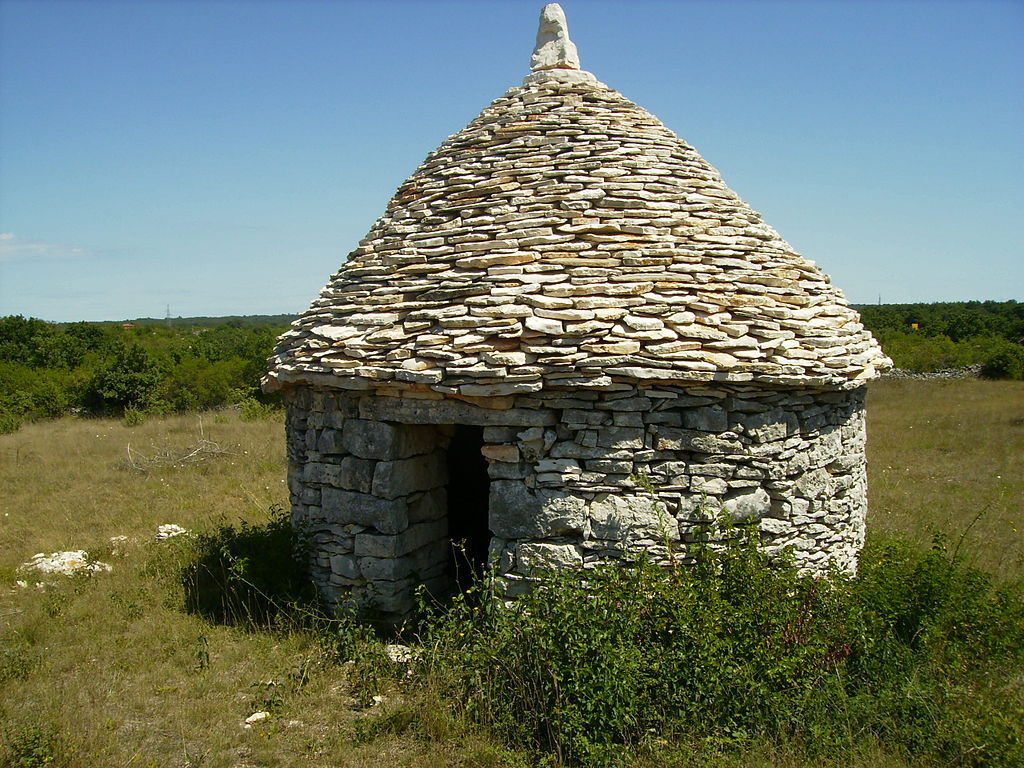 A kažun near Vodnjan
A kažun near Vodnjan
Similar structures reportedly existed on the Adriatic coast as early as in prehistoric times, and are found in varying forms all over the Mediterranean. It can’t be said for sure when the stone huts first appeared in Istria, but they grew to become a staple of the region, where they’re much more commonly found than in any other part of the Croatian coast.
They started popping up more frequently in the 18th and 19th centuries, when the sudden population growth in Istria resulted in increased agricultural production. The more crops and cattle to tend to, the more farmers working the fields, the higher the need for shelter and storage. It’s estimated that as many as 3000 kažun huts remain standing to this day in the Vodnjan area alone!
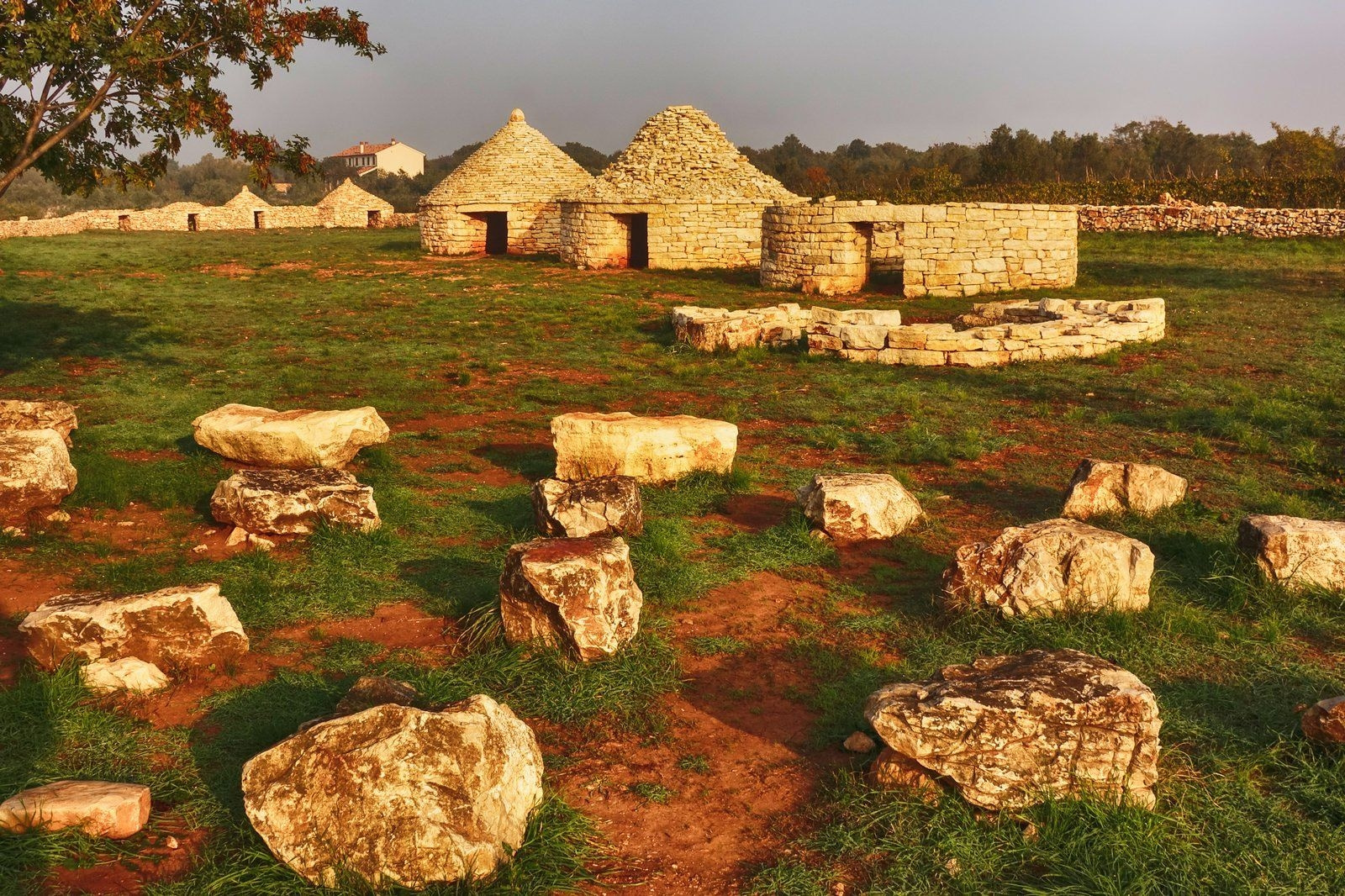 Kažun Park / vodnjan.hr
Kažun Park / vodnjan.hr
Speaking in modern terms, as far as sustainable architecture goes, you won’t find a better practice than the kažun. No other materials were used to build them other than stone, which wasn’t hard to source as the terrain is abundant in it. Whoever wanted to cultivate the land had to clear the soil of stone first, resulting in plenty of building material to work with. The kažun was a byproduct of agriculture in more ways than one, a clever feat of engineering that made sure no resource went wasted.
The traditional method of kažun construction was passed down from generation to generation, and even though there’s much less need for them these days, it definitely isn’t a lost art. There are many enthusiasts in Croatia keeping the dry stone building technique alive, and since the famous kažun is an integral part of Istrian identity, it’s no surprise that it has its own theme park.
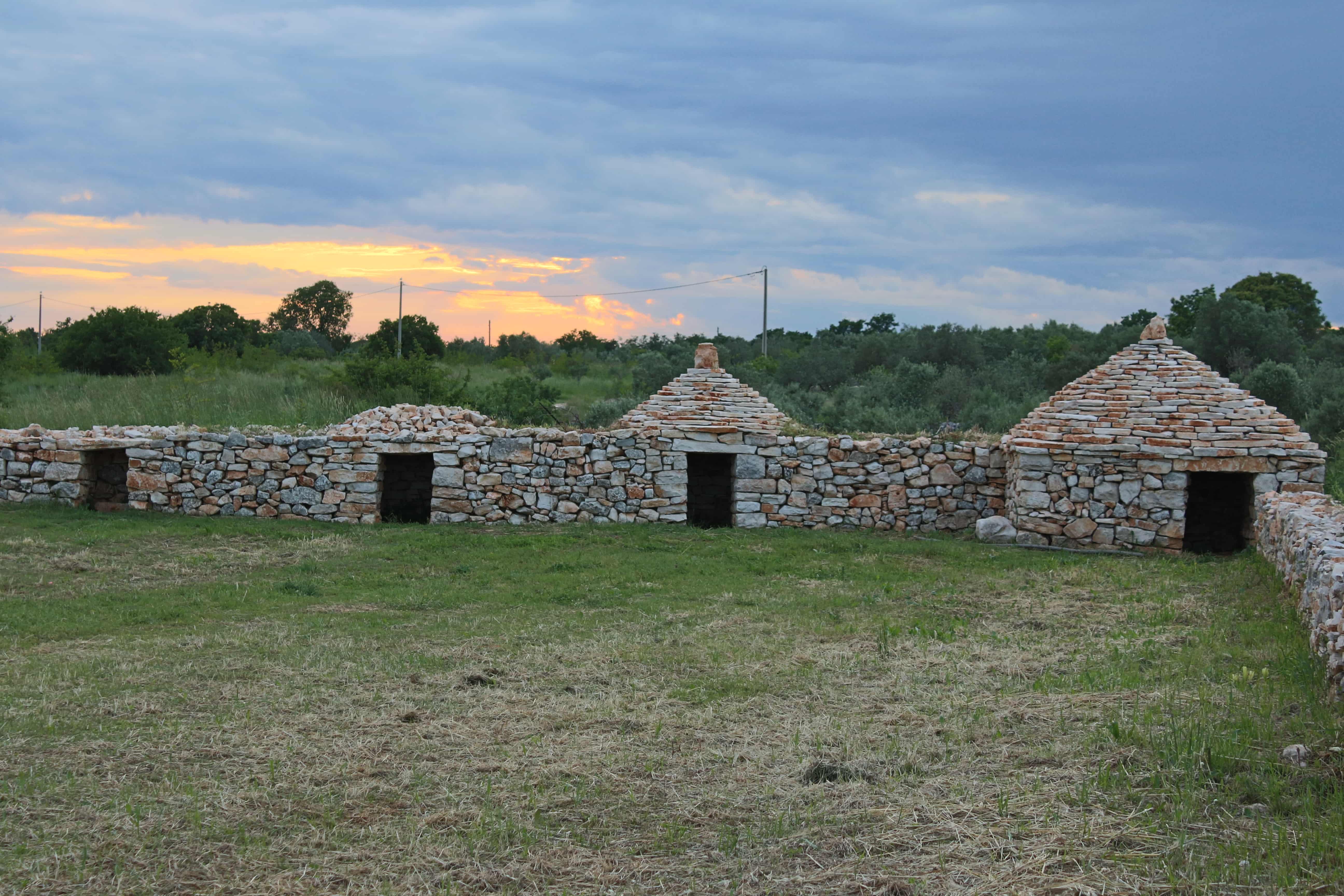 Kažun Park / vodnjan.hr
Kažun Park / vodnjan.hr
The Kažun Park near Vodnjan is referred to as a museum in the open, dedicated to the little huts that adorn the Istrian landscape. It aims to introduce the public to traditional building methods, with construction broken down into four distinct stages to make it easier to comprehend: the foundations, the walls, the roof, the finishing touches. Anyone can have a go at it, as the park doubles as a place to learn and practice dry stone building.
Even if you’re not inclined to try your hand at traditional skills, that doesn’t mean you can’t have a kažun of your own. They appear to be an endless source of inspiration for souvenirs, and can be purchased all over Istria in numerous forms varying from small-scale replicas to mass-produced keychains. In case you want the real deal, keep an eye out for craft fairs and similar traditional manifestations, as they’re your best chance of finding hand-built kažun models made of stone - a lovely, authentic keepsake to remind you of the time spent in terra magica.
Fishermen in Istria Struggling With Jellyfish Infestation
February 20th, 2022 - The barrel jellyfish is mostly harmless to humans, but sure seems to be a menace to fishing nets due to its size - and numbers. Fishermen have been struggling with an invasion of huge jellyfish in the north of Istria that shows no sign of subsiding
An infestation of large jellyfish has been a source of headache for fishermen in Umag and Savudrija for two months now, so much so that some have given up and are not even going out to sea anymore. There are so many of them, and they’re so big and heavy that they destroy the nets as the fishermen lift them out of the sea, reports Jutarnji list.
Danilo Latin, a fisherman from Savudrija, says it’s not uncommon for them to pull out one ton of jellyfish at a time. He’s never seen such a thing before, and fishermen in general don’t know how to go about it.
‘This has been going on for two months. It’s never been this way. Last year, [the jellyfish] appeared for a short while in March and that was that. This year they just won’t leave, and we don’t know when we’ll be able to go out to sea again. There are so many of them that even us fishermen are starting to feel uneasy. A friend of mine was recently at sea and told me that he’s never been scared to look at the sea before. He had a feeling as if it were ghosts under the surface’, said Latin.
Latin and other fishermen who are dealing with the jellyfish invasion in northern Istria are calling for the situation to be declared a natural disaster.
‘We can’t go out to sea as we only suffer damage. Some of the jellyfish weigh up to eight kilograms. And we don’t even know when we’ll be able to sail out. We informed experts at the Institute of Agriculture and Tourism in Poreč of this, and invited the Ruđer Bošković Centre for Marine Research in Rovinj as we wish for this to be declared a natural disaster. As far as I know, the scientists from the Rovinj institute haven’t yet arrived to see what’s going on. We reached out to the Department of Agriculture of Istria County and they told us they had never dealt with this issue. It’s new to everyone’, Latin said, adding it wasn’t only an issue in Umag and Savudrija, but also in the waters of Slovenia and the Italian region Friuli Venezia Giulia.
Scientist Barbara Sladonja from the Centre for Invasive Species of the Institute of Agriculture and Tourism in Poreč wasn’t able to say with certainty when the jellyfish would pull back and if it would happen before summer.
‘It’s the barrel jellyfish (Lat. Rhizostoma pulmo). This jellyfish is naturally found in our waters, and over the last hundred years or so, it has made an occasional appearance in large numbers. It’s the so-called jellyfish bloom phenomenon, seen in many jellyfish species, including the barrel jellyfish. In recent years, such blooms have been lasting longer and longer. It can’t be said for sure when it will pull back. Judging by the last few years, they already should have retreated, but their population remains large. We hope this won’t last until summer’, said the scientist.
She explained there were several reasons why the jellyfish would appear in such large numbers.
‘One reason is the sea temperature being too high. The barrel jellyfish population should decrease significantly in winter due to low temperatures. This year, it apparently hasn’t dropped low enough, and the population kept growing. In addition, marine food chains have been disrupted by several factors’, said Sladonja.
Experts from the Ruđer Bošković Institute from Rovinj said they were monitoring the phenomenon and that this jellyfish species is among the bigger ones found in the Adriatic. They can weigh up to 10 kilos each.
Until they fall back, it’s only the Ministry of the Sea that can help the fishermen. According to Ezio Pinzan, head of Istria’s Department of Agriculture, Istria County doesn’t have the funds for it.
‘We have to see what’s going on and how to prevent it from happening again next year. The Ministry has an aid package of 50 million kuna in the works, which they’ll distribute to our fishermen for this difficult situation’, said Pinzan.


